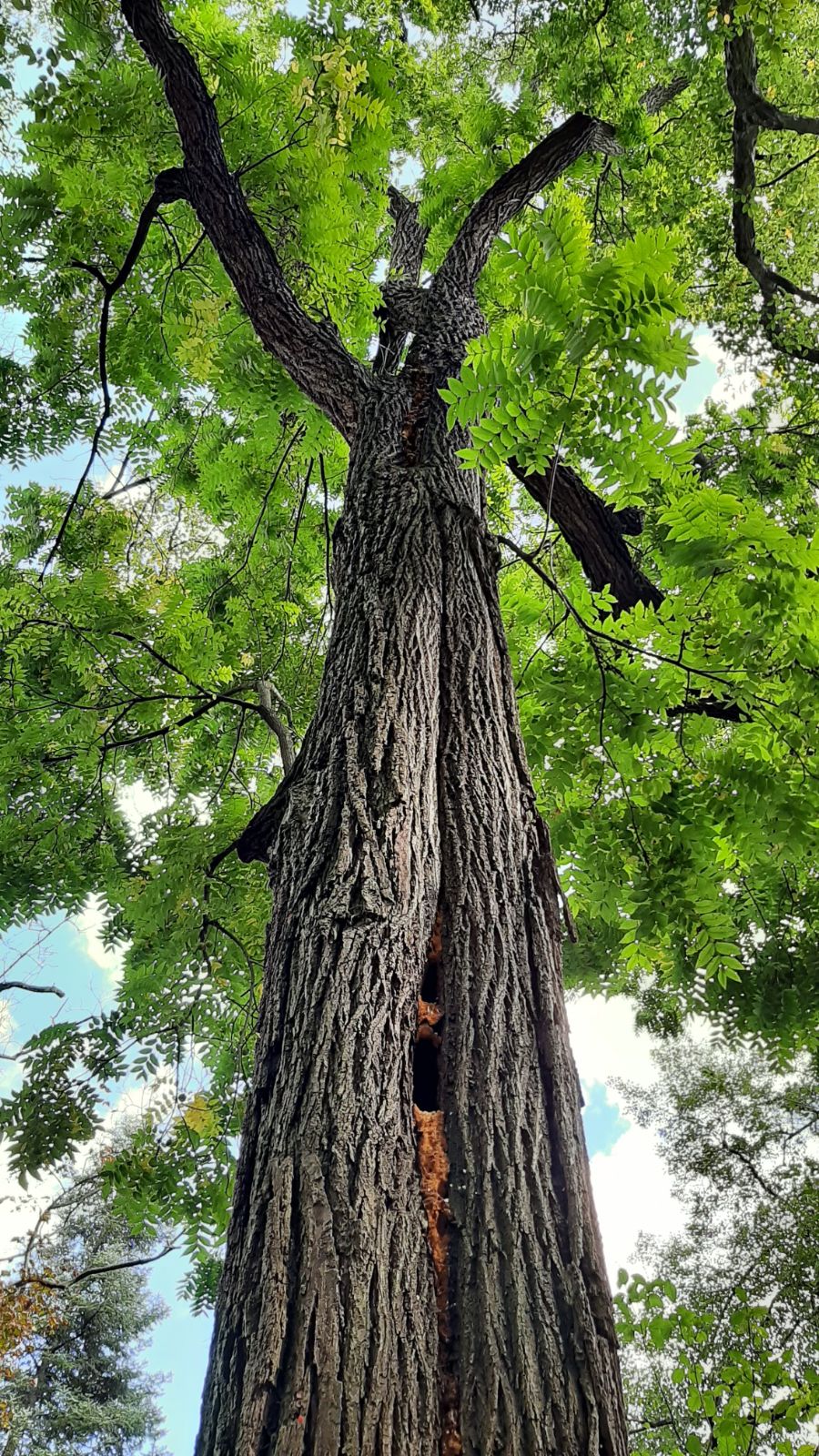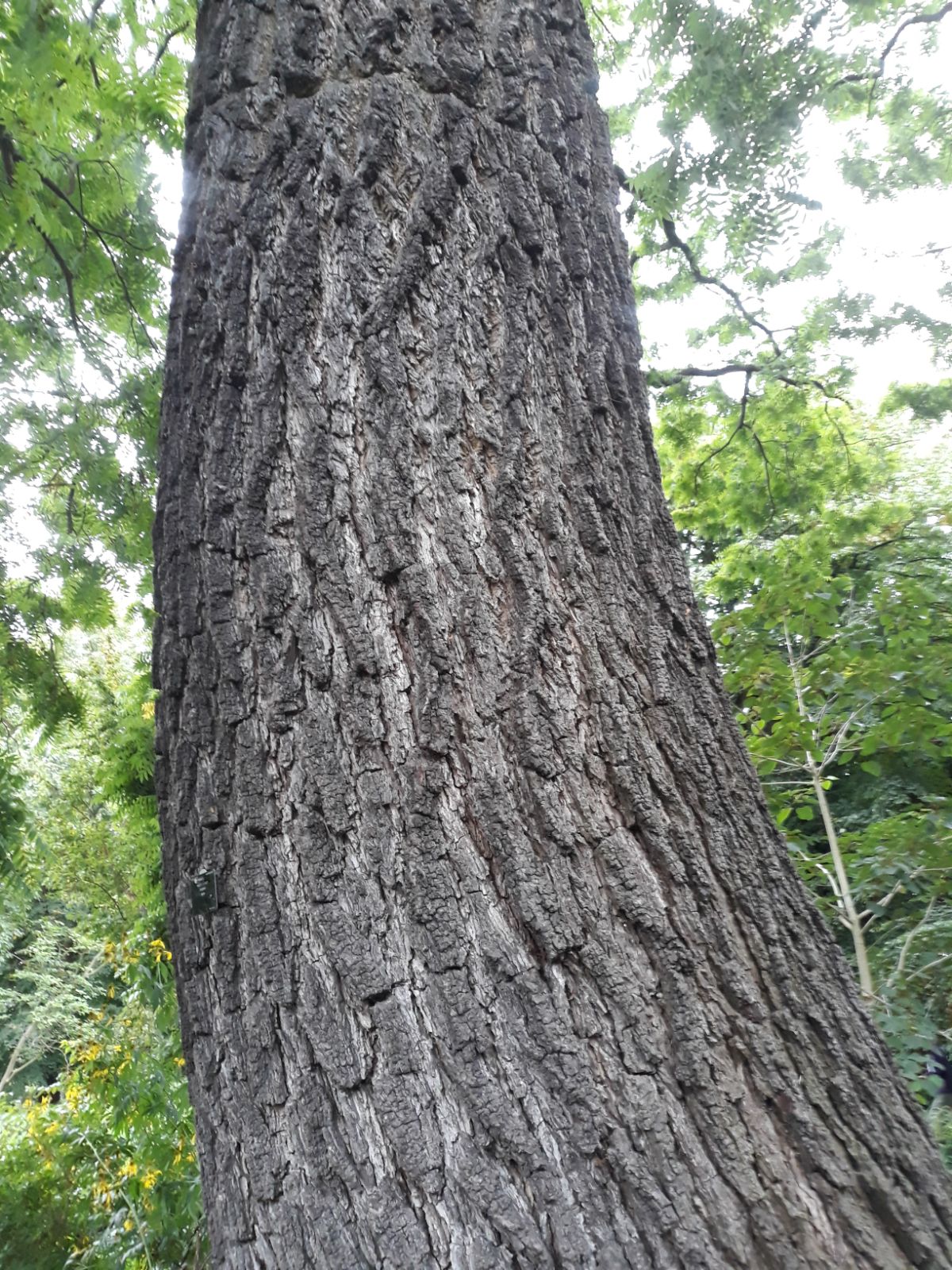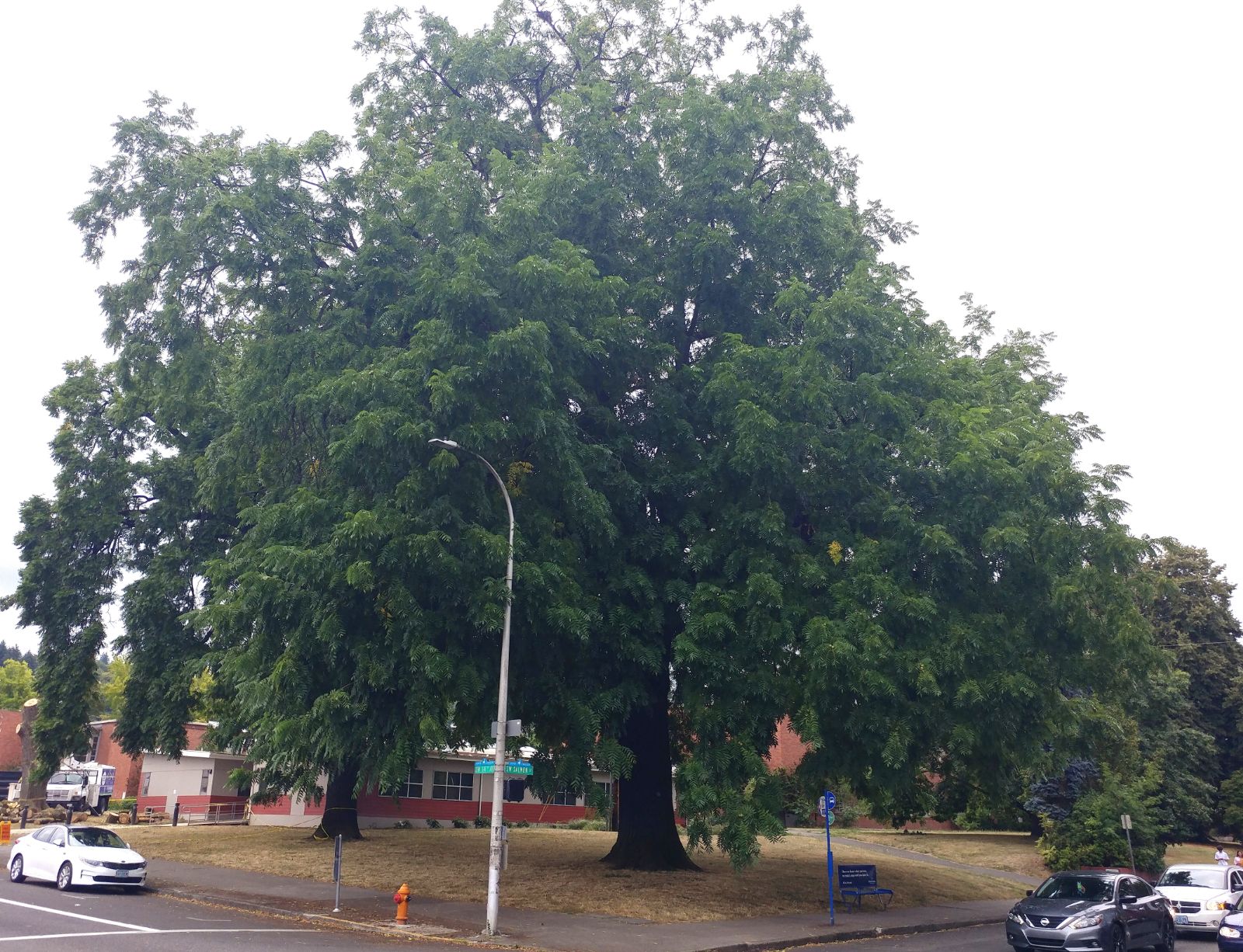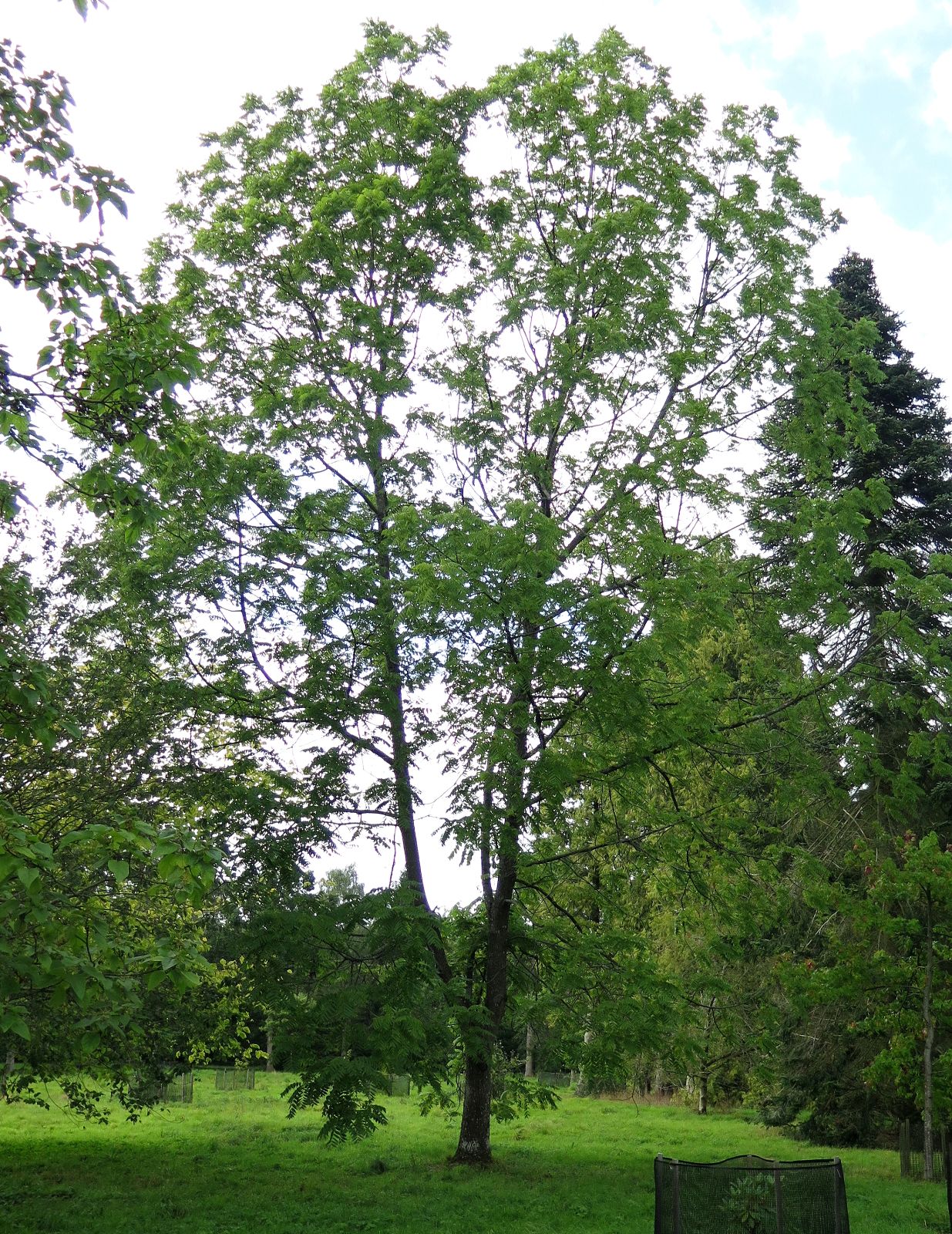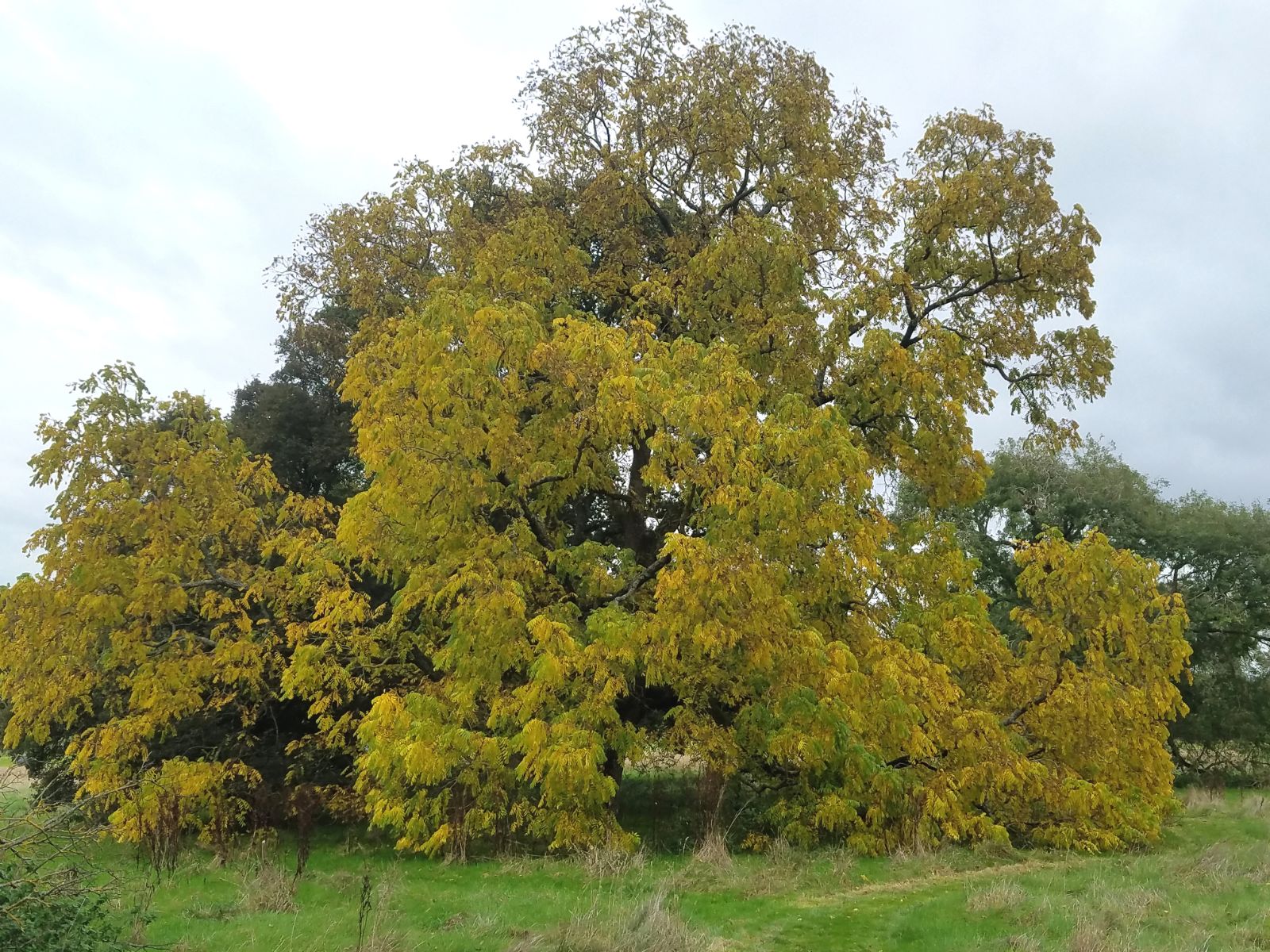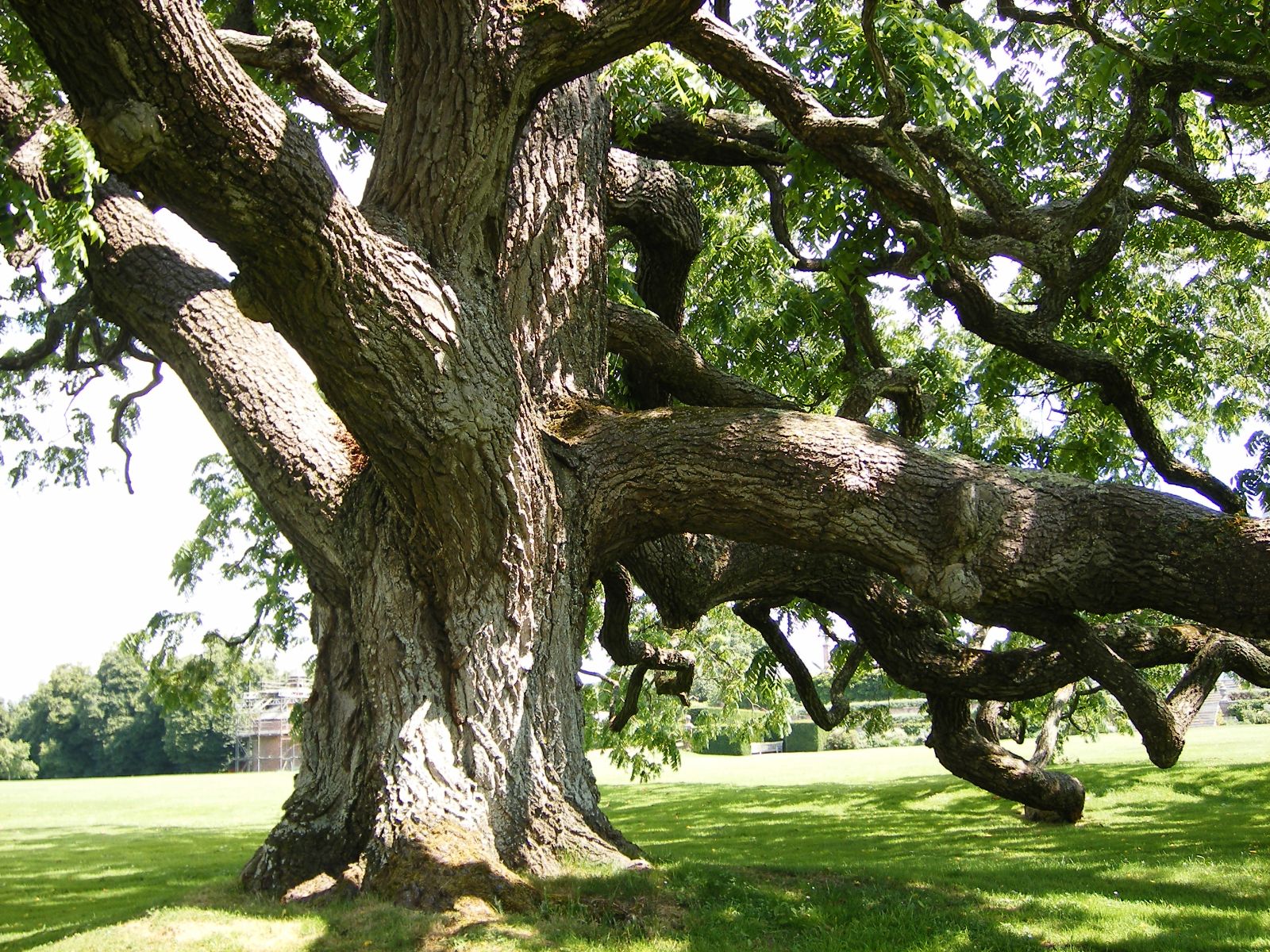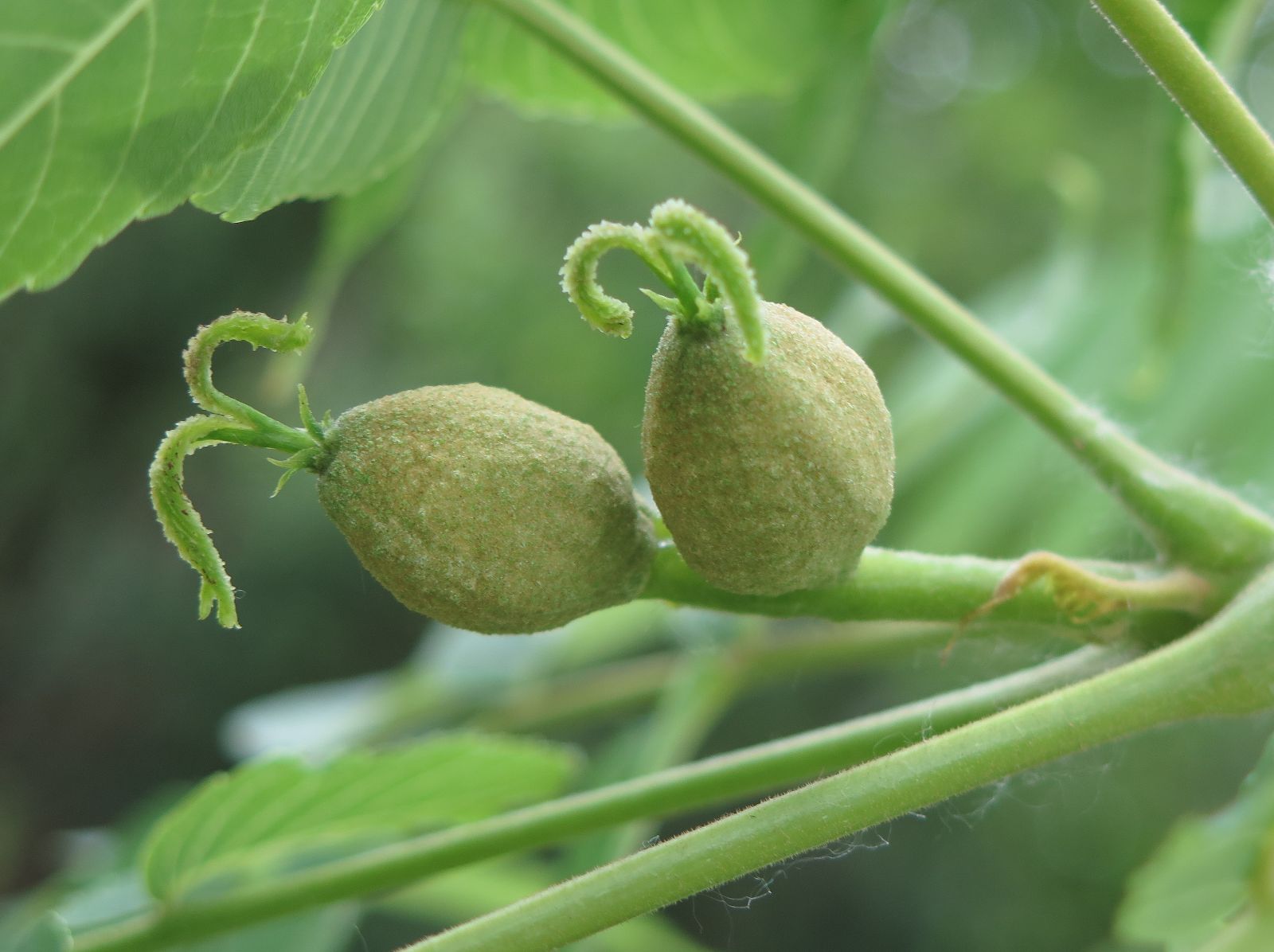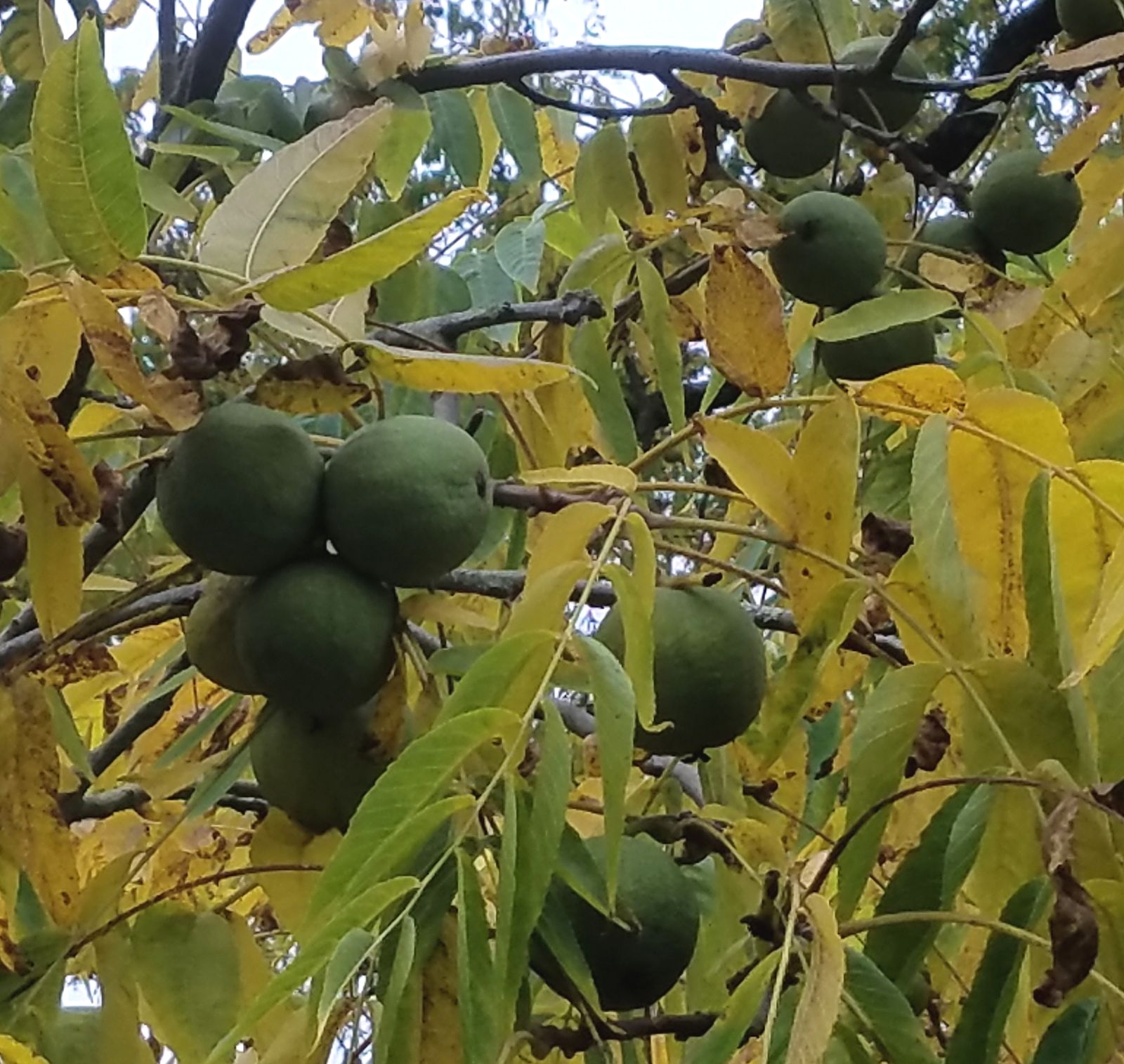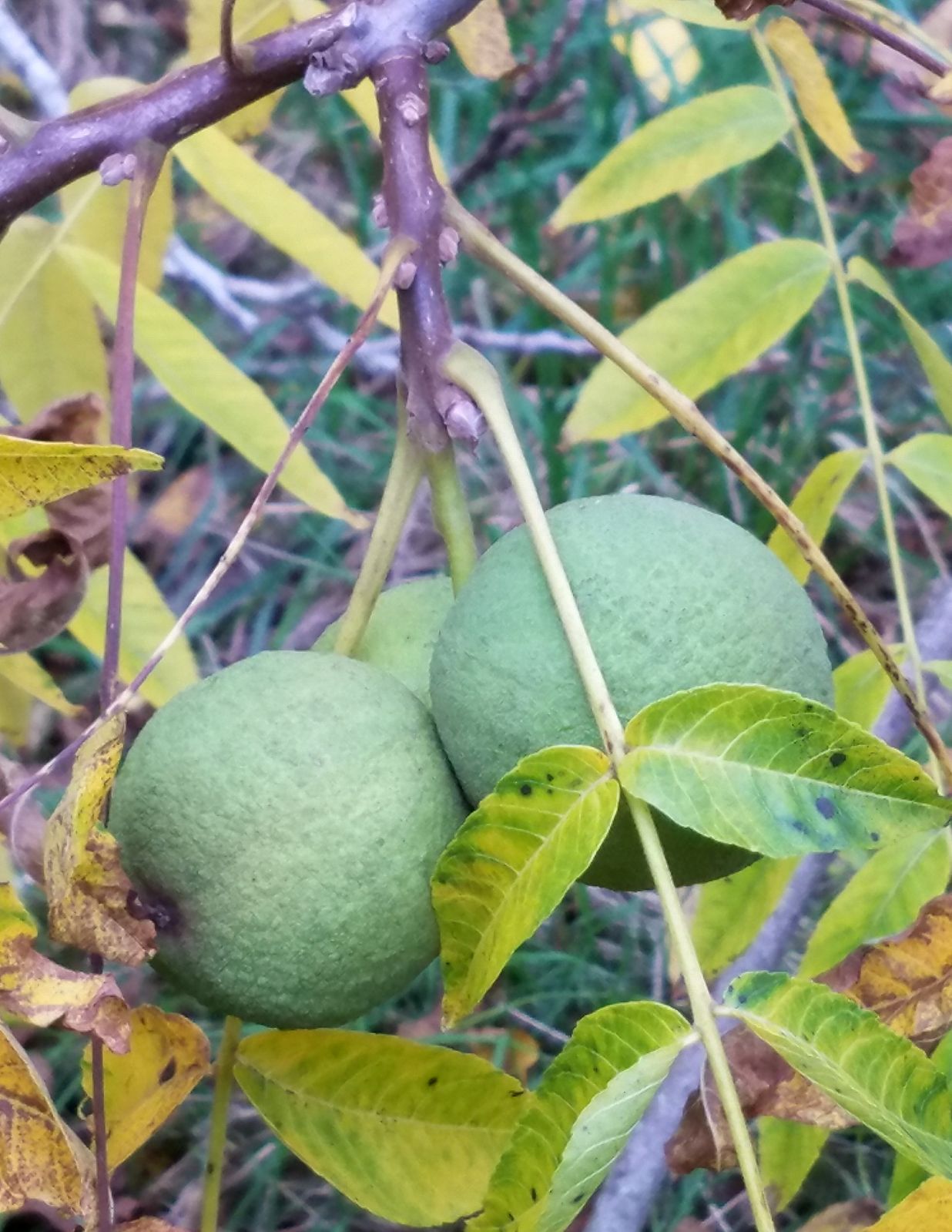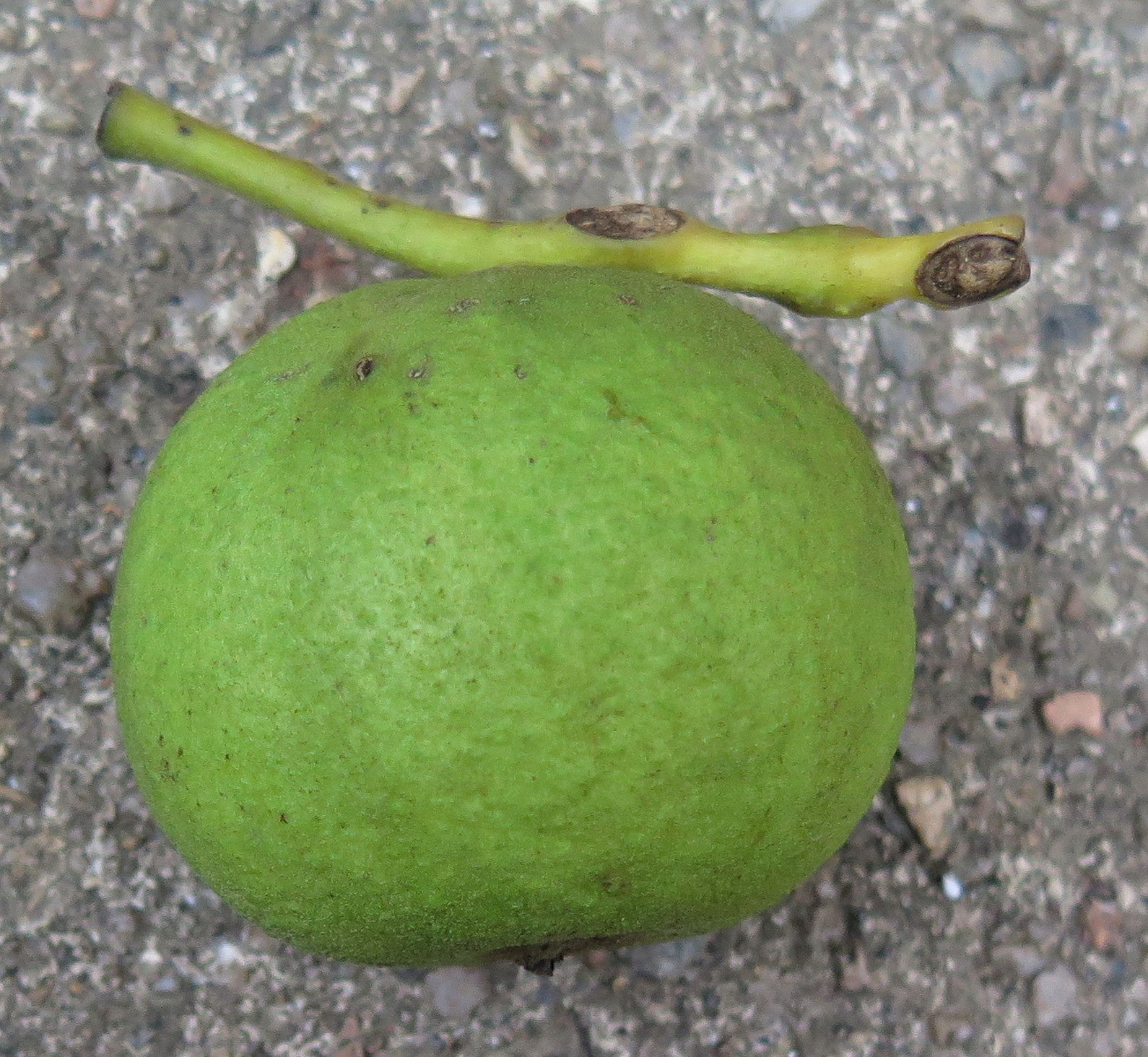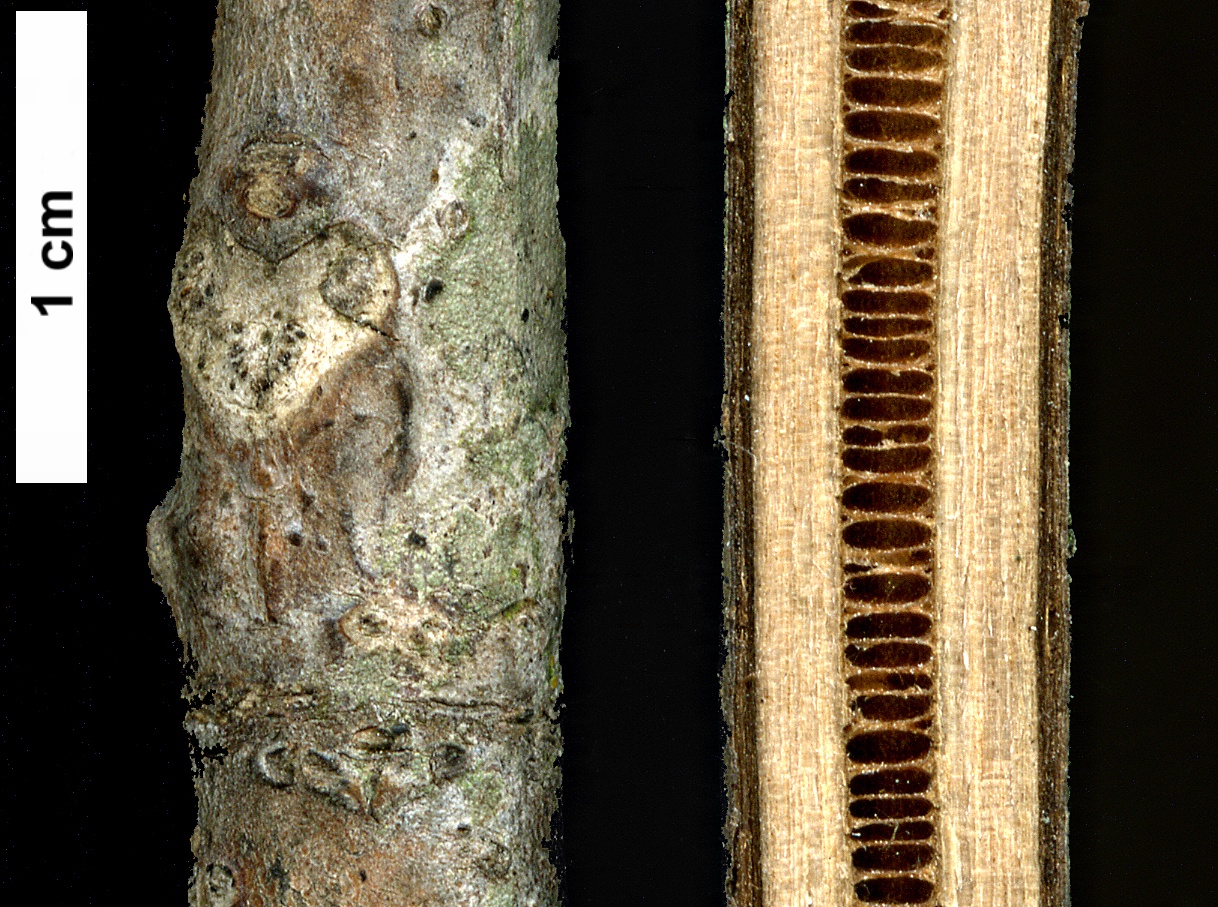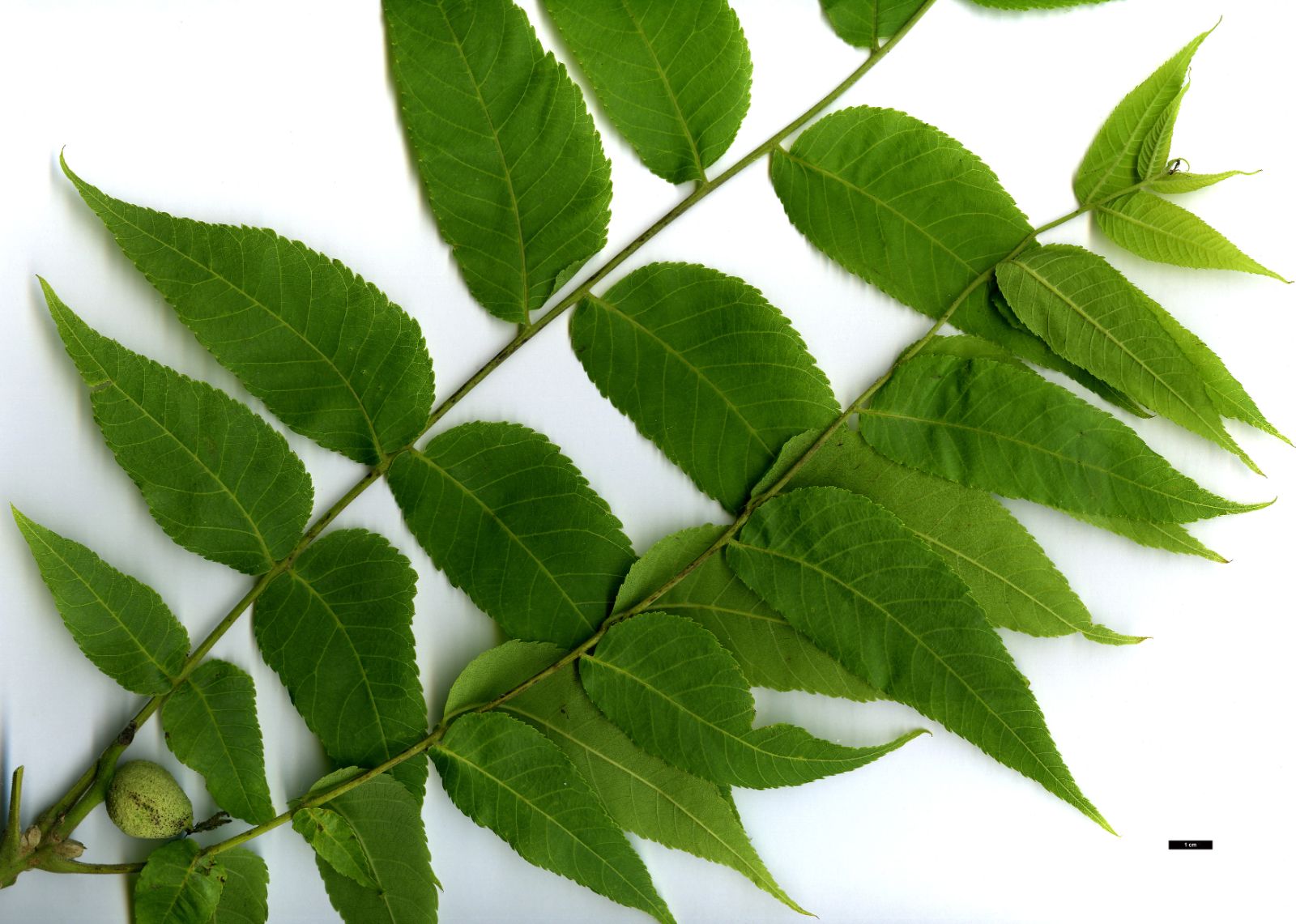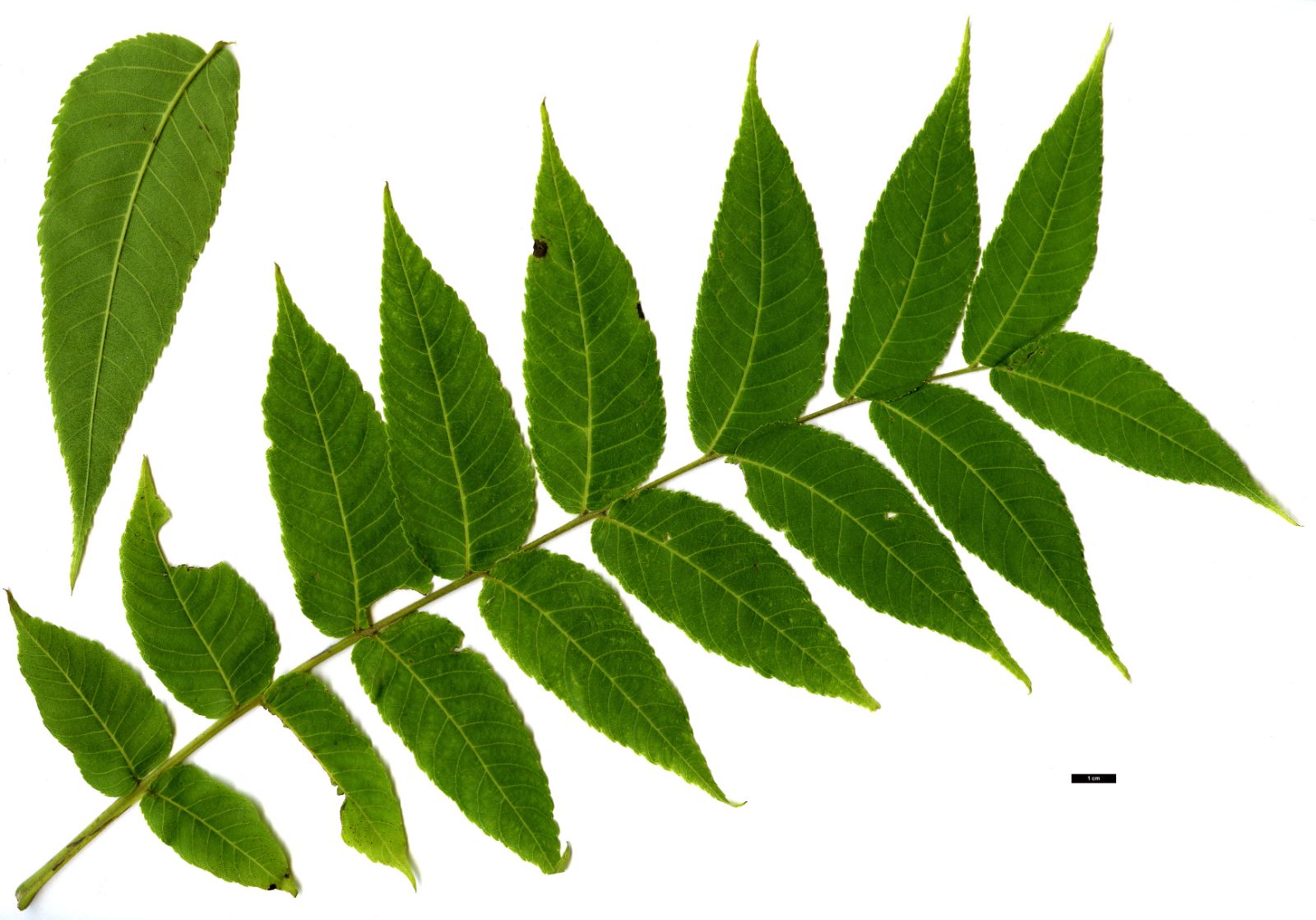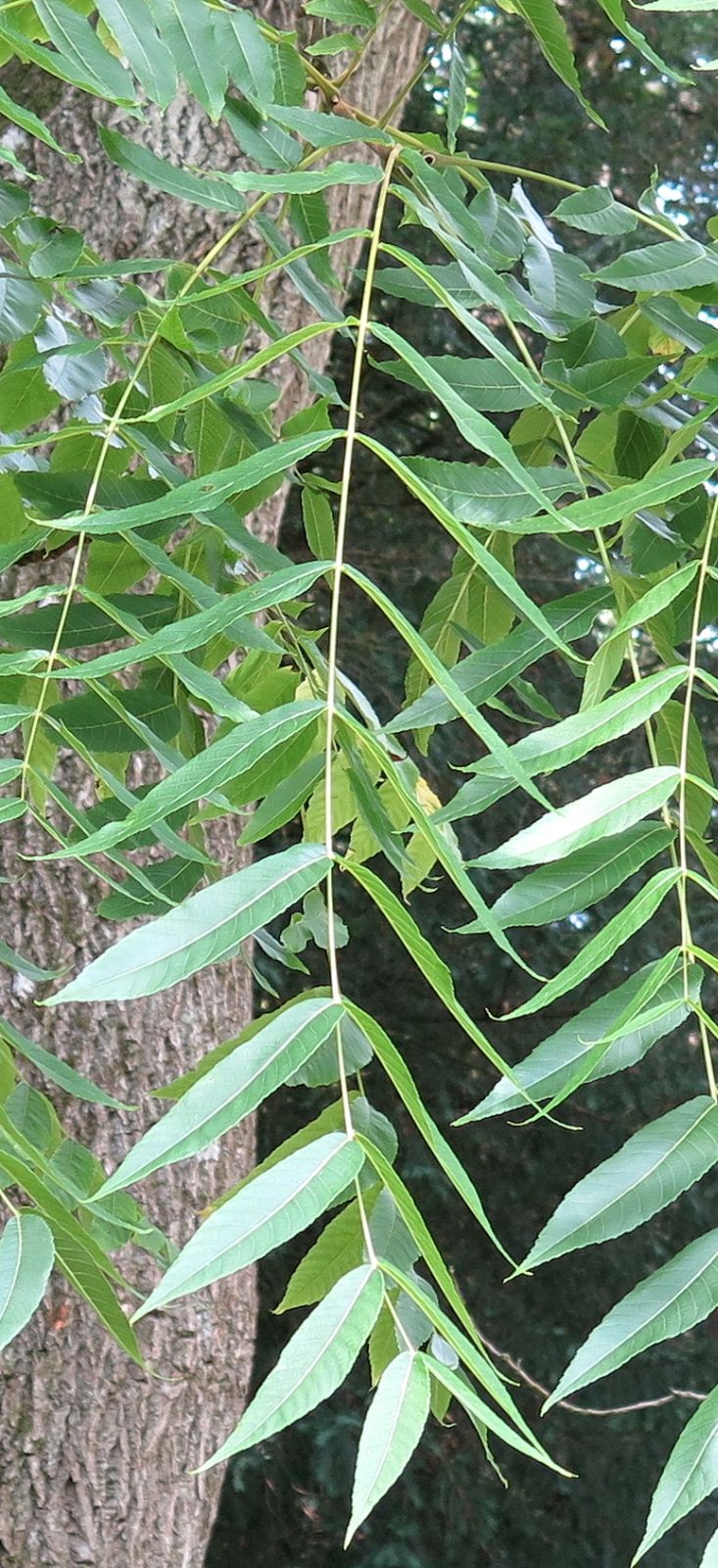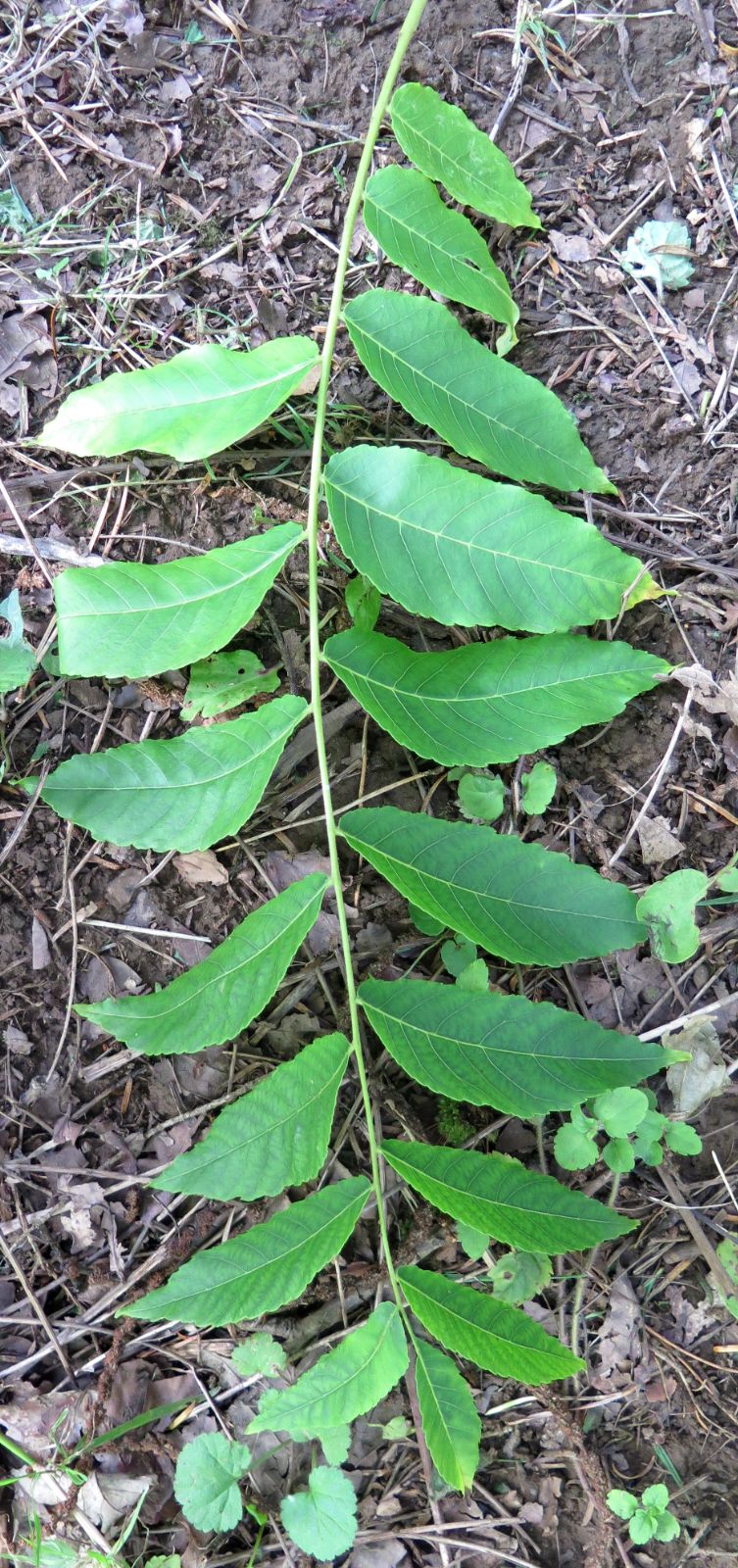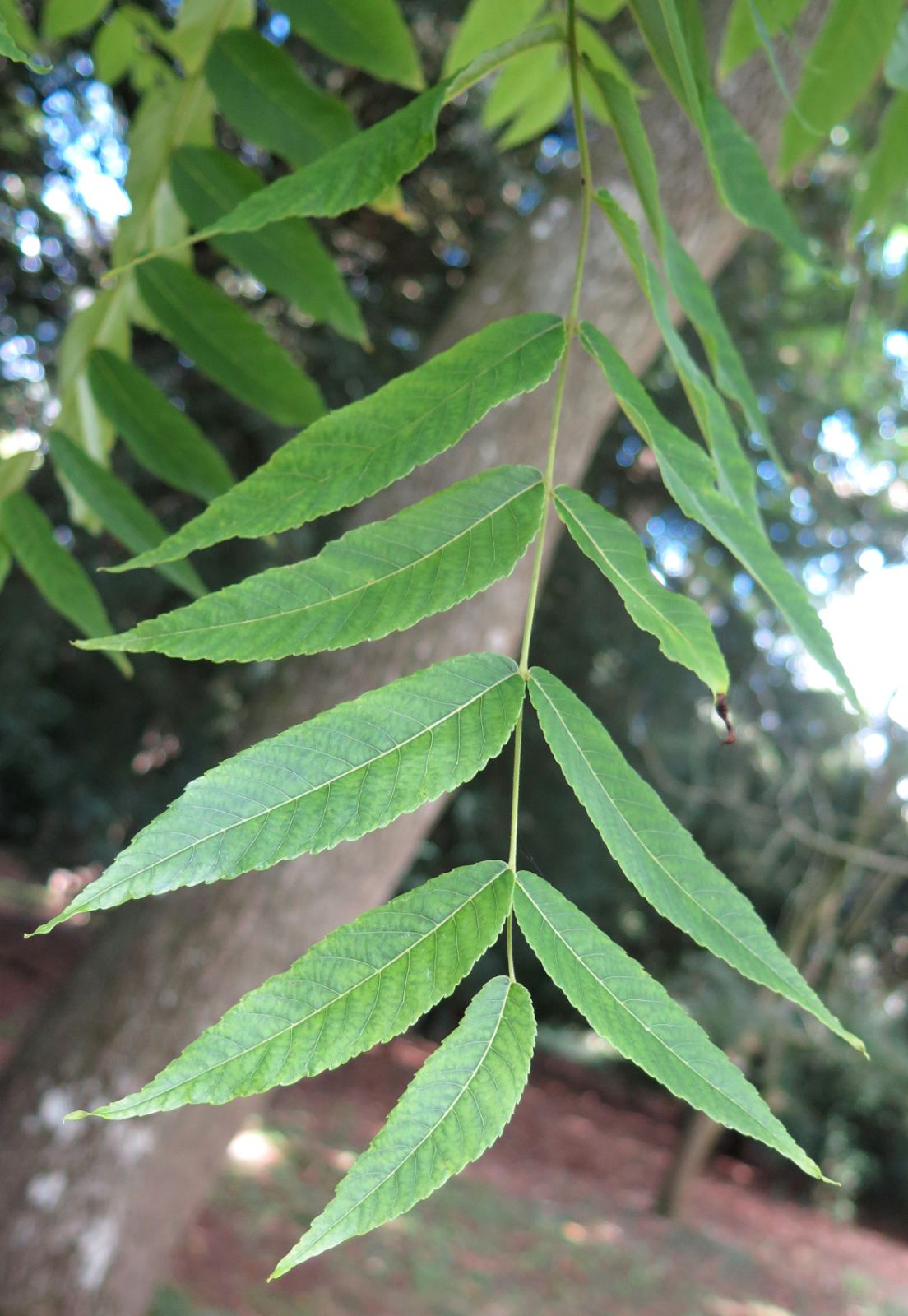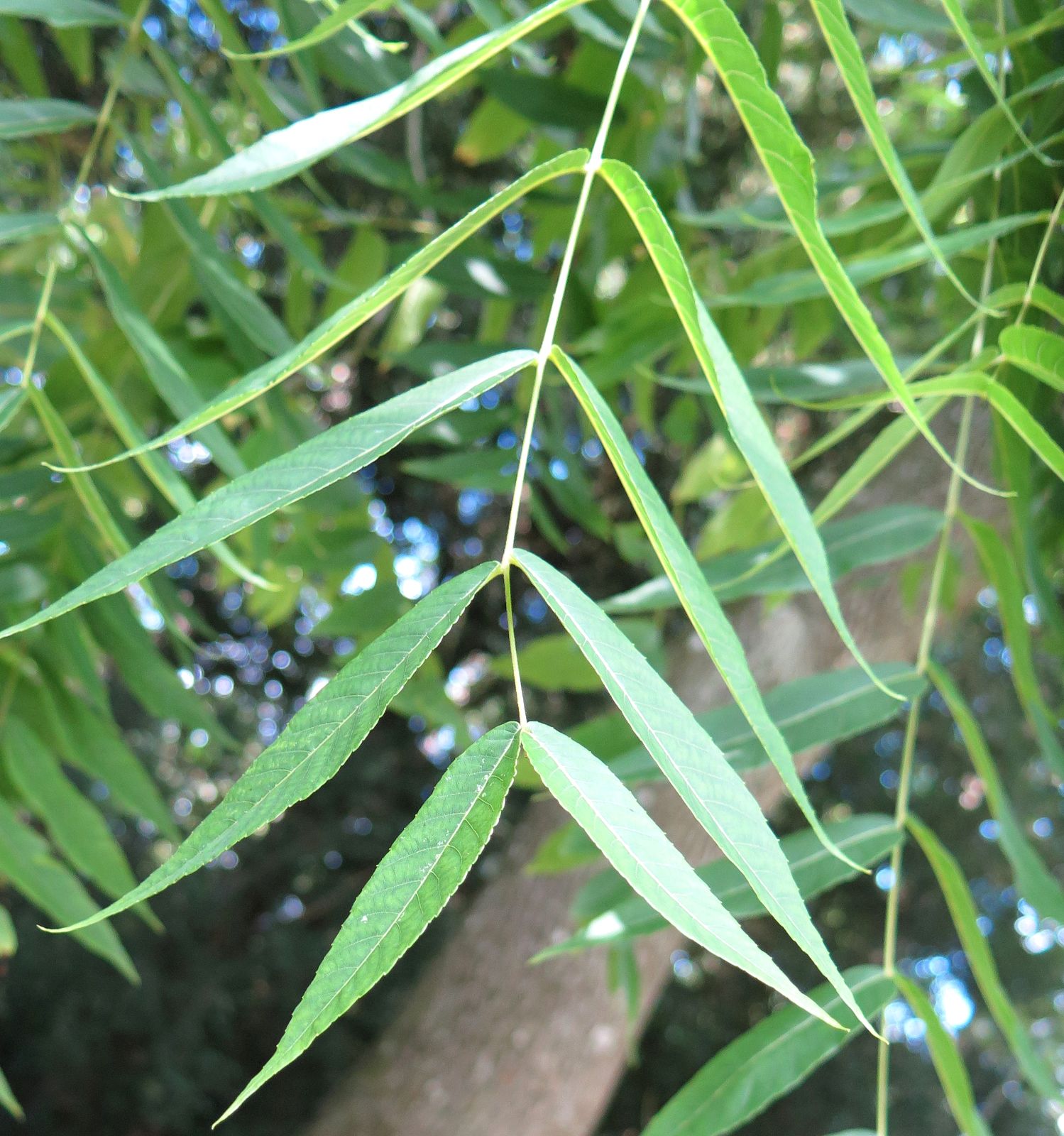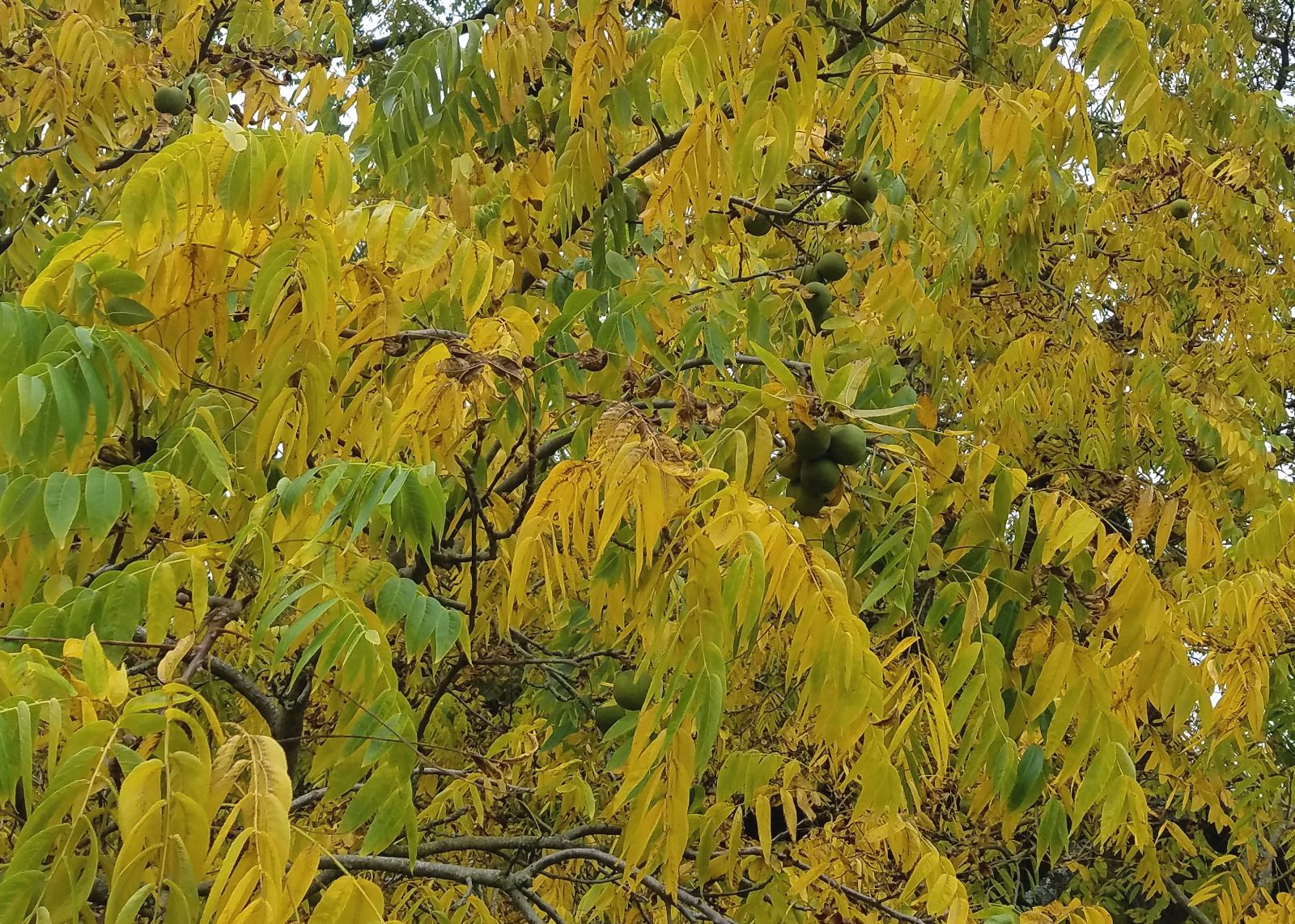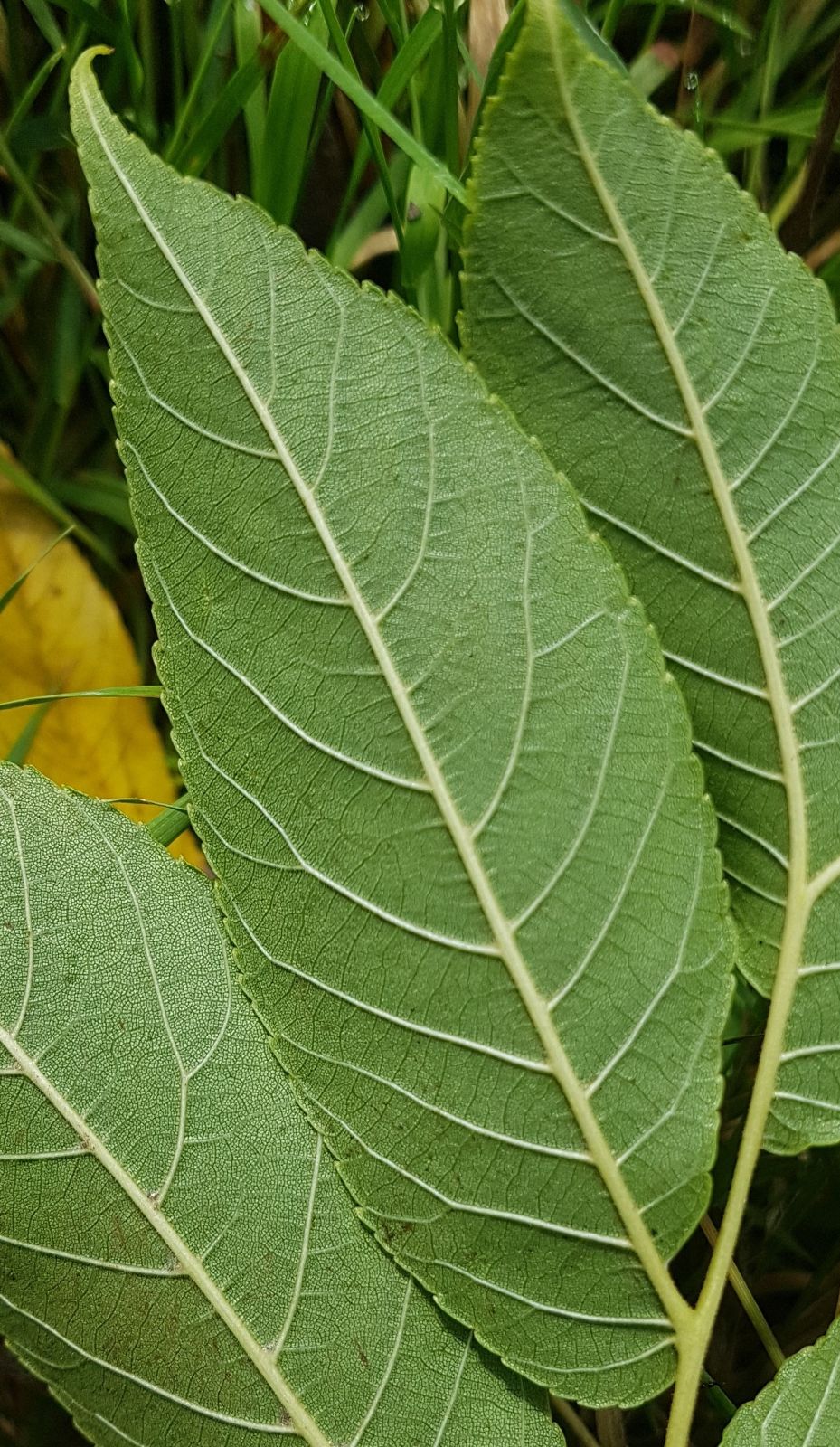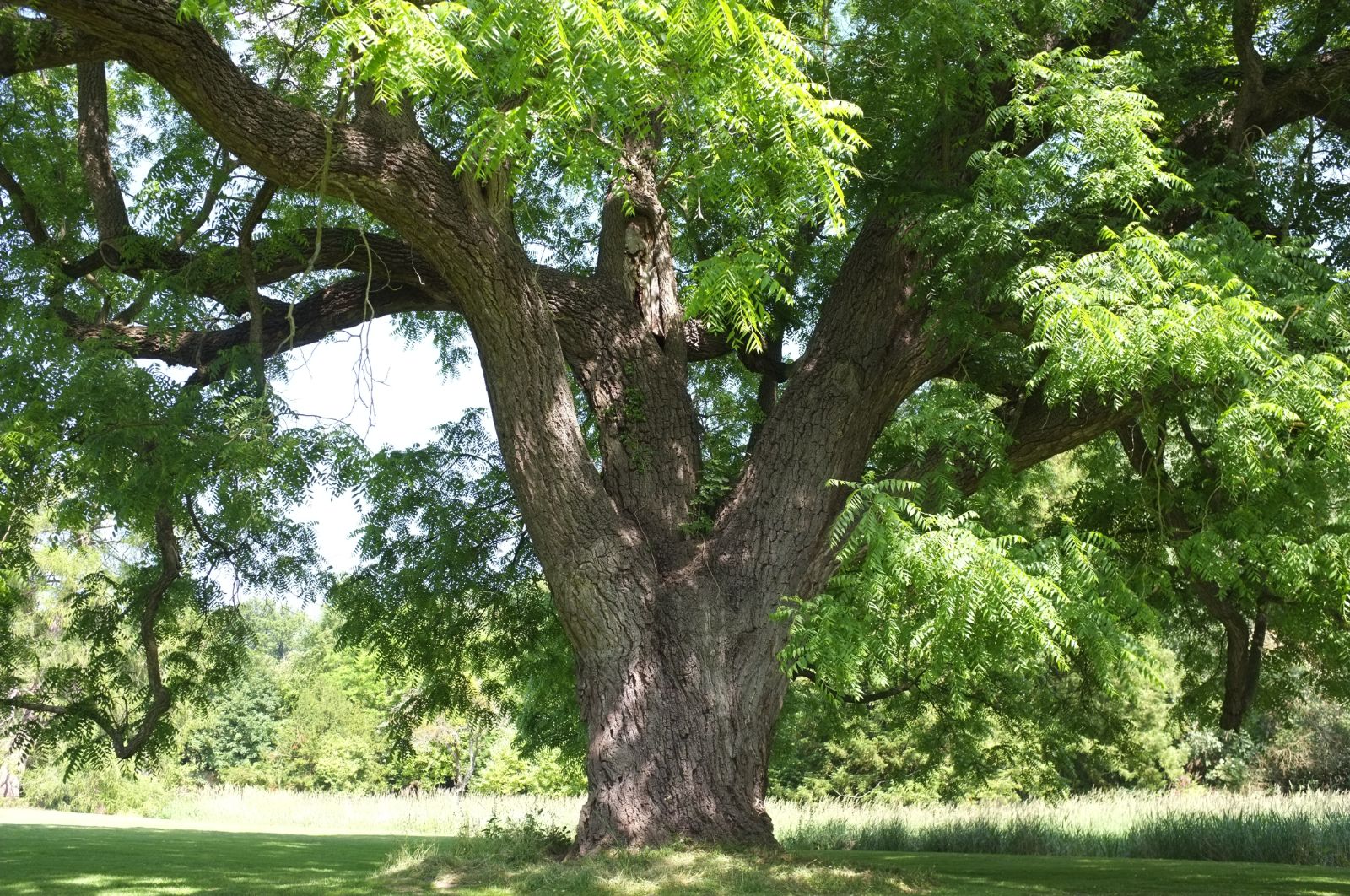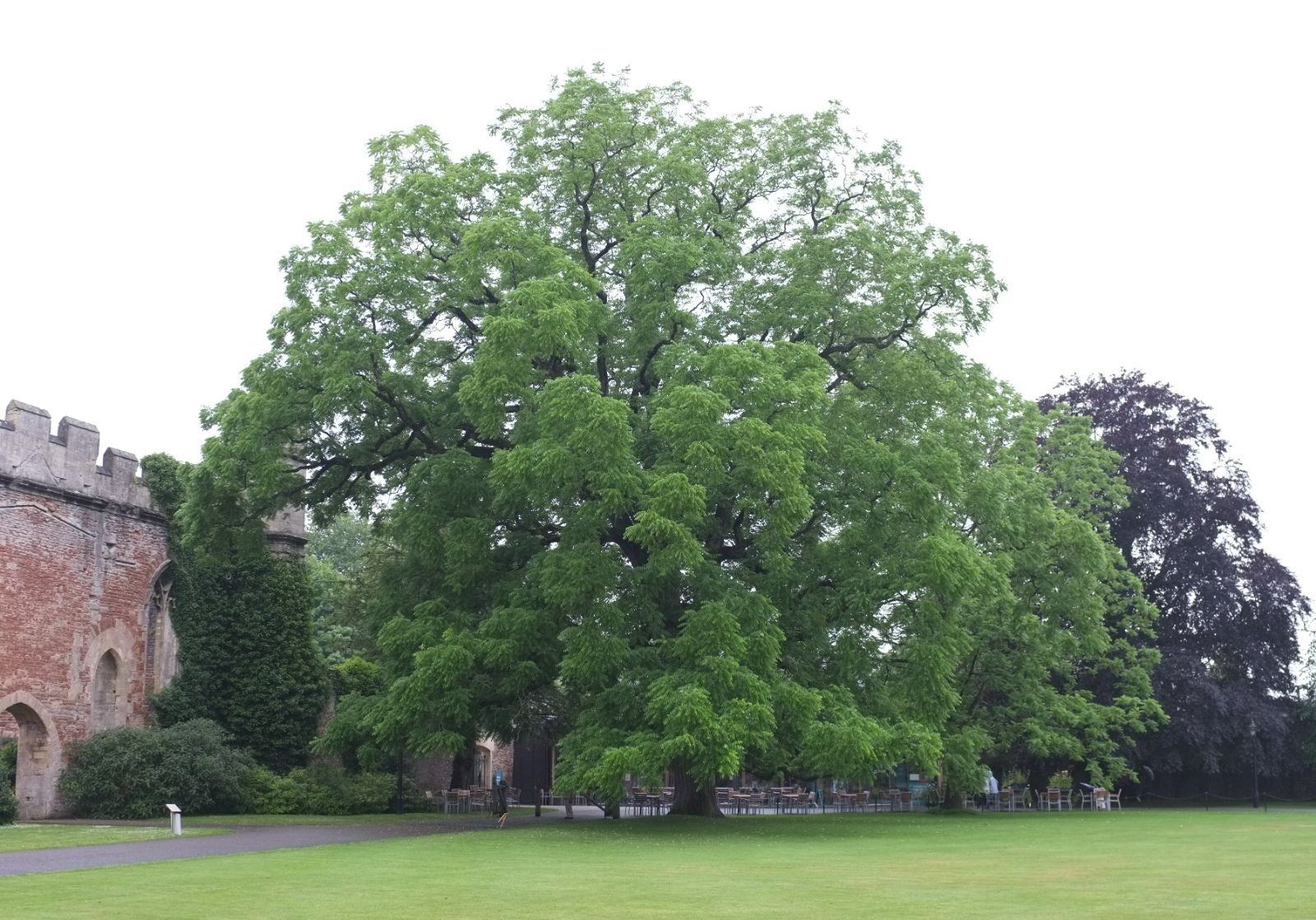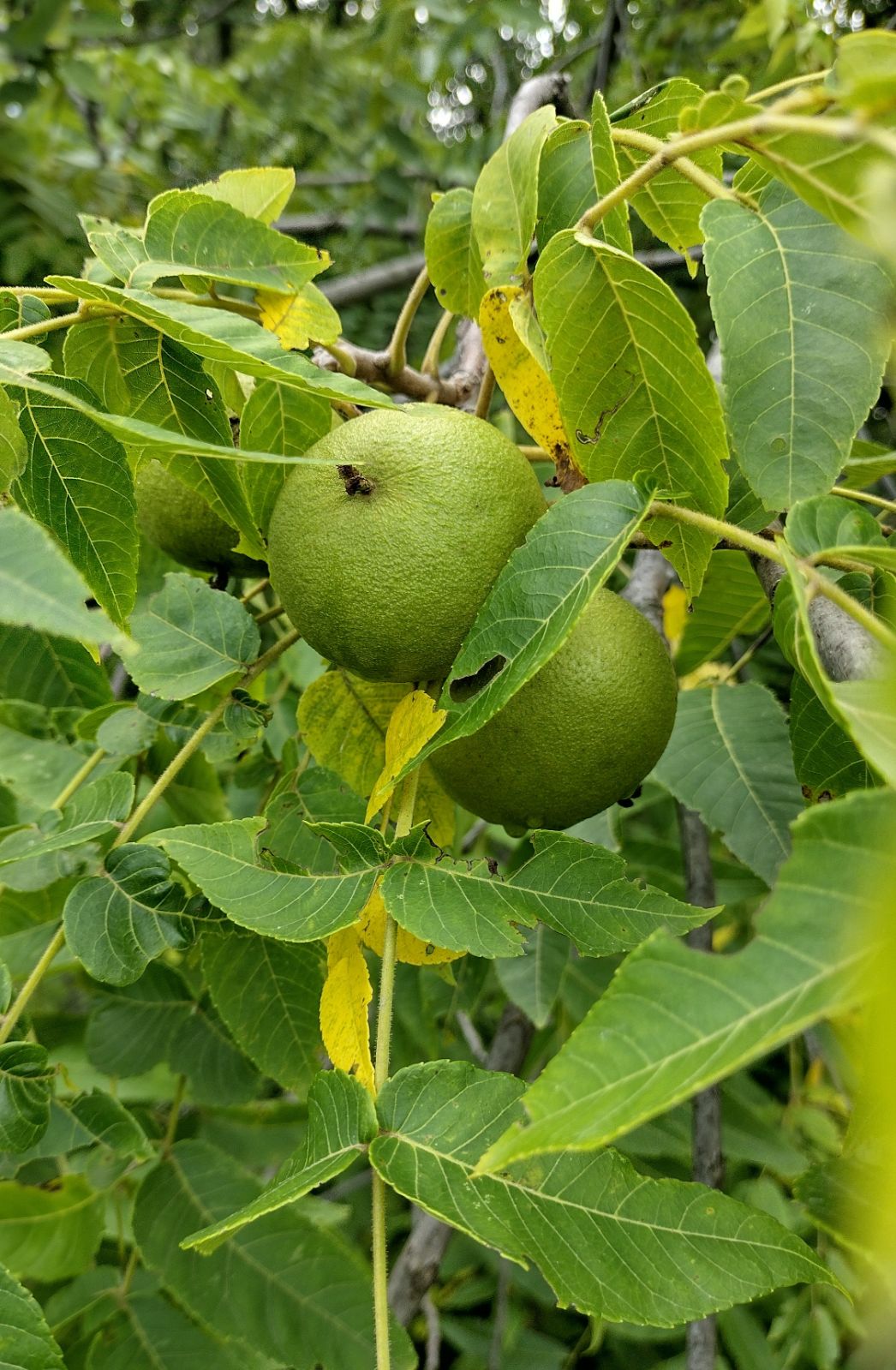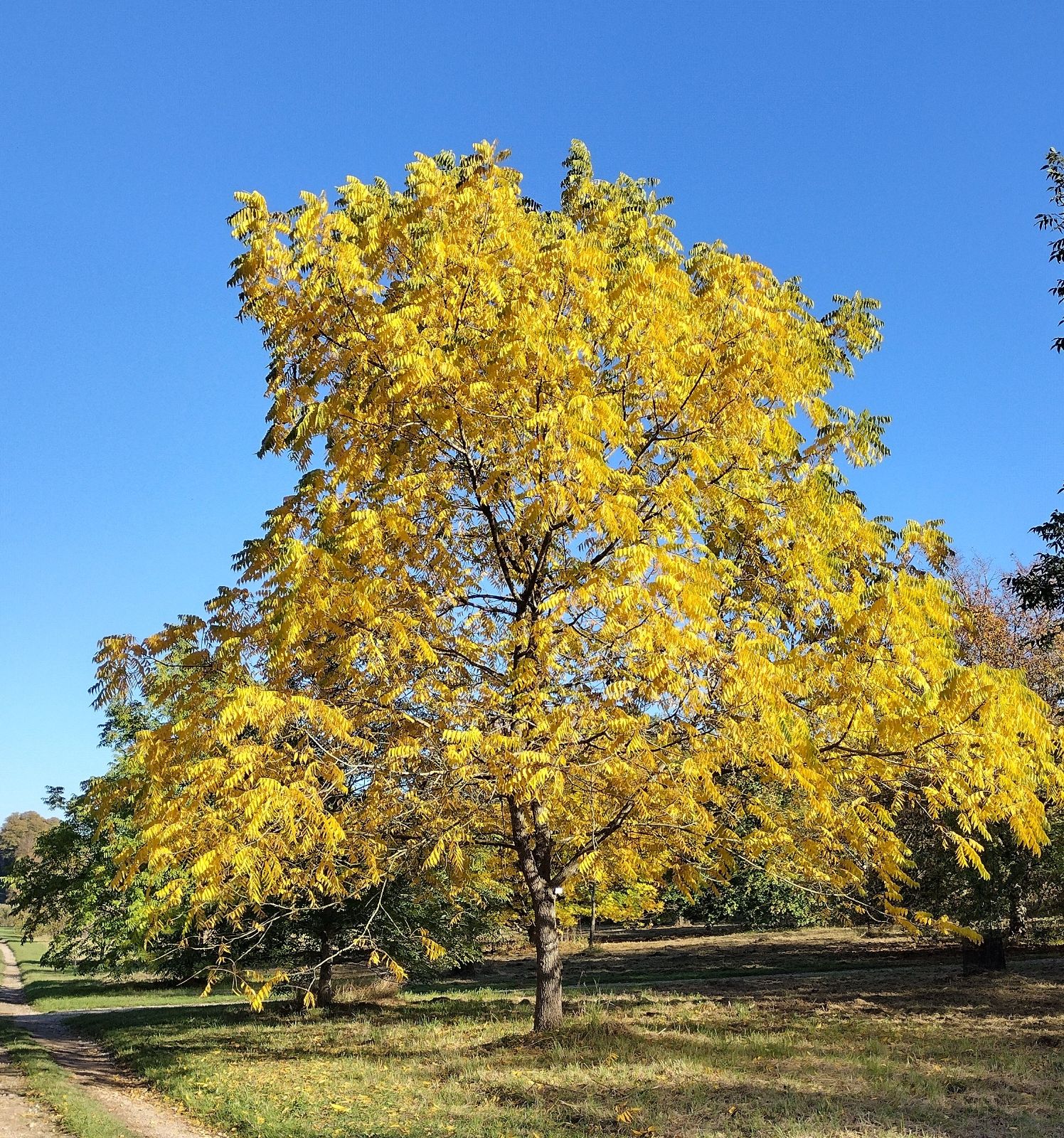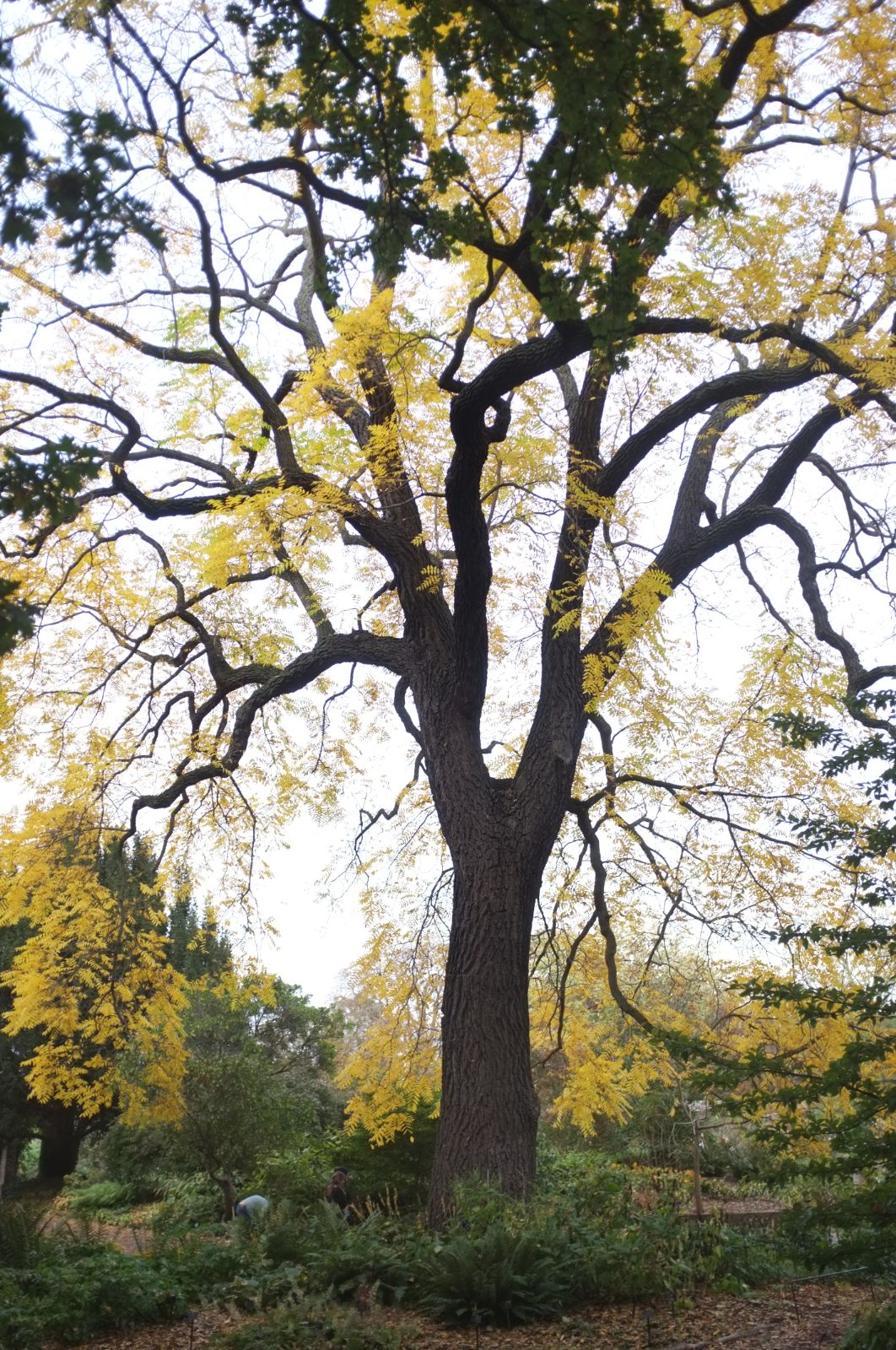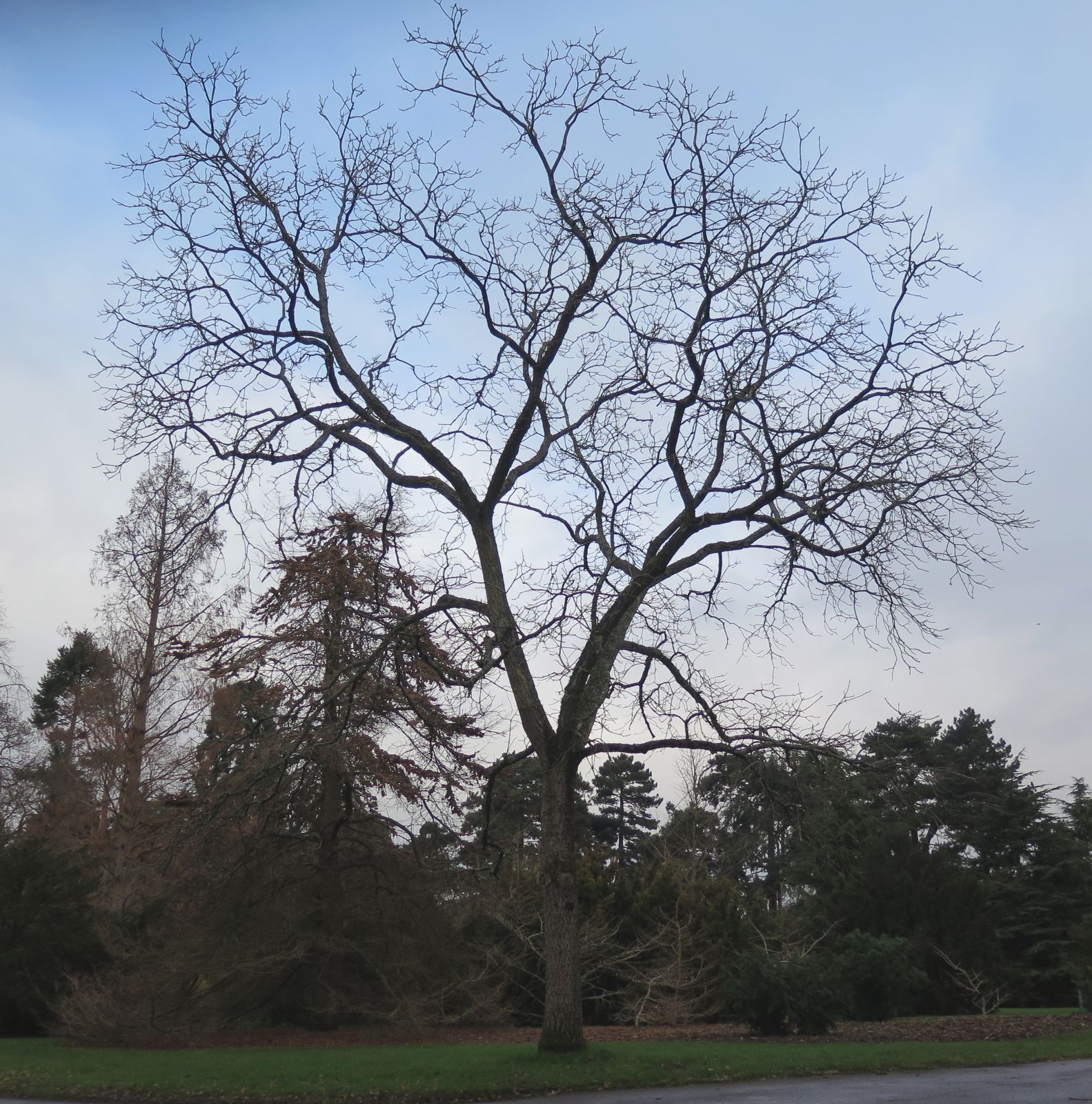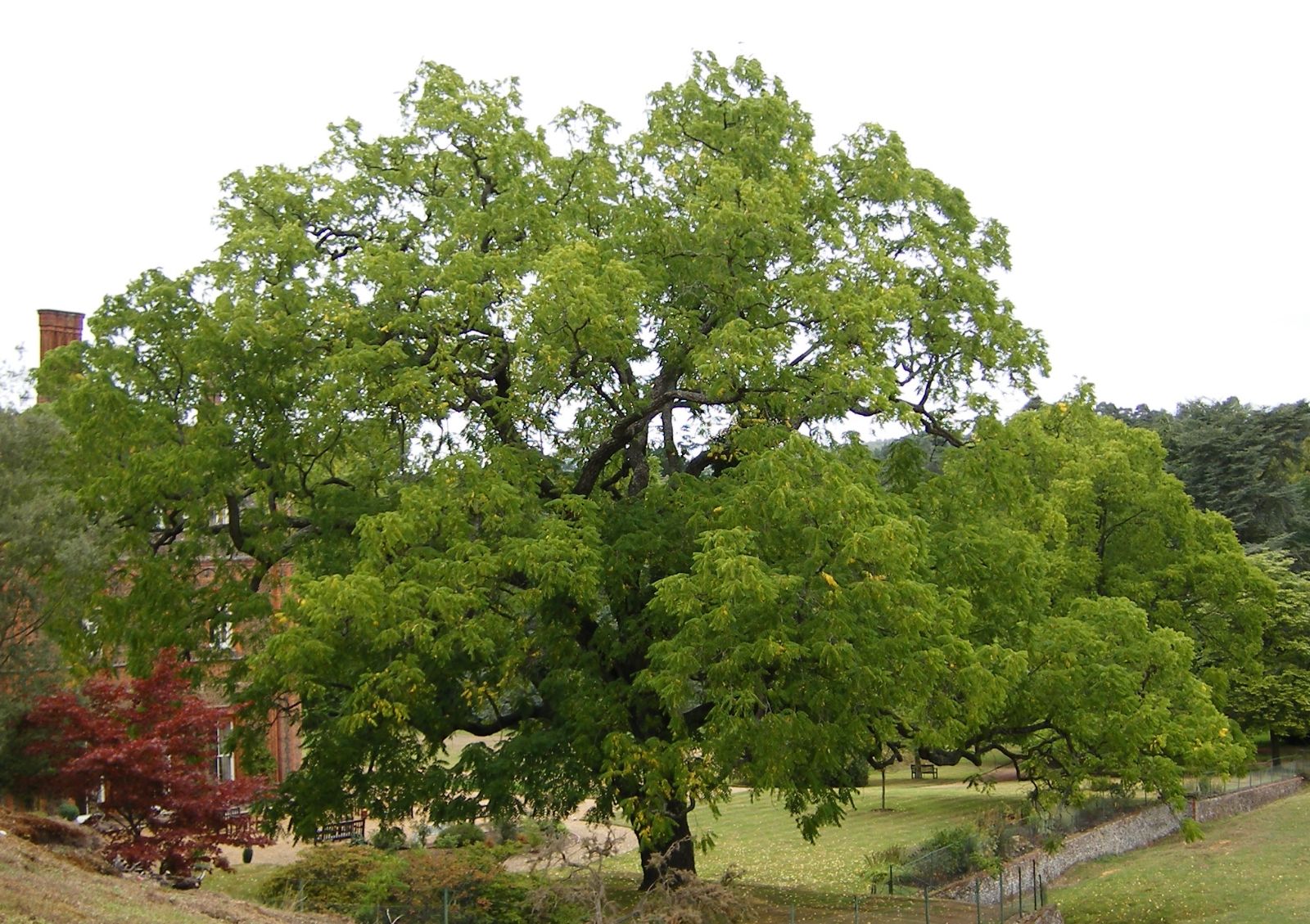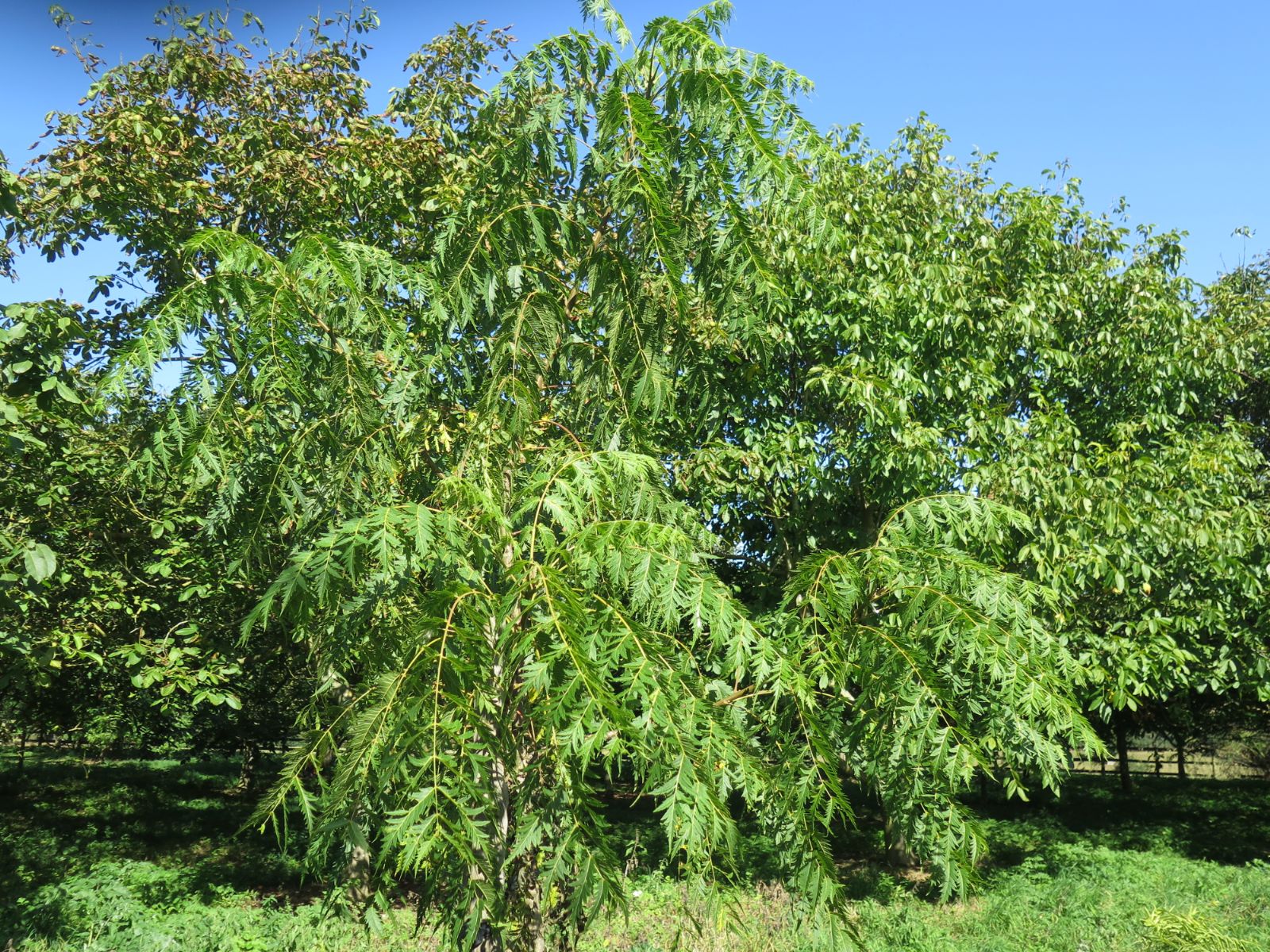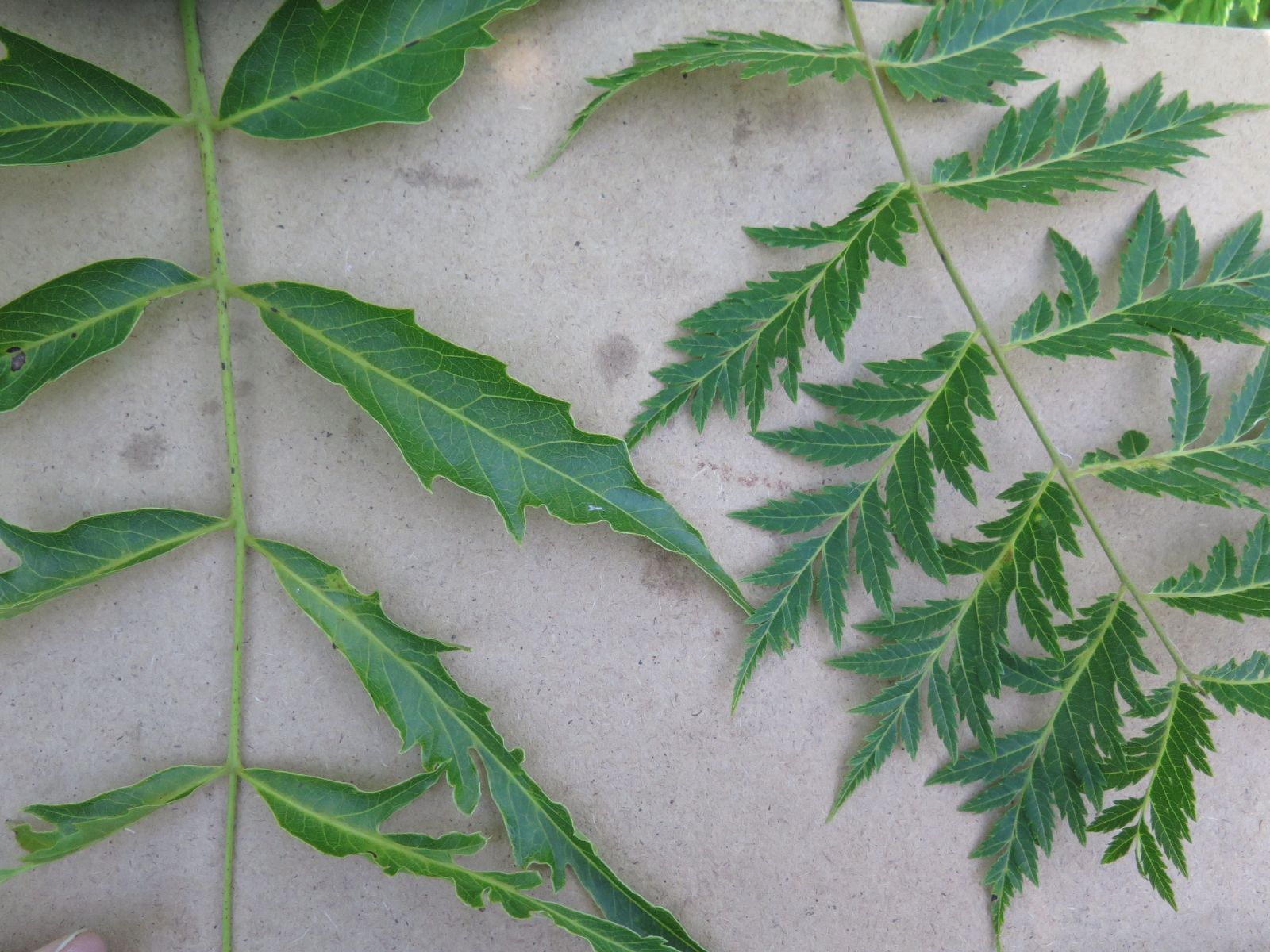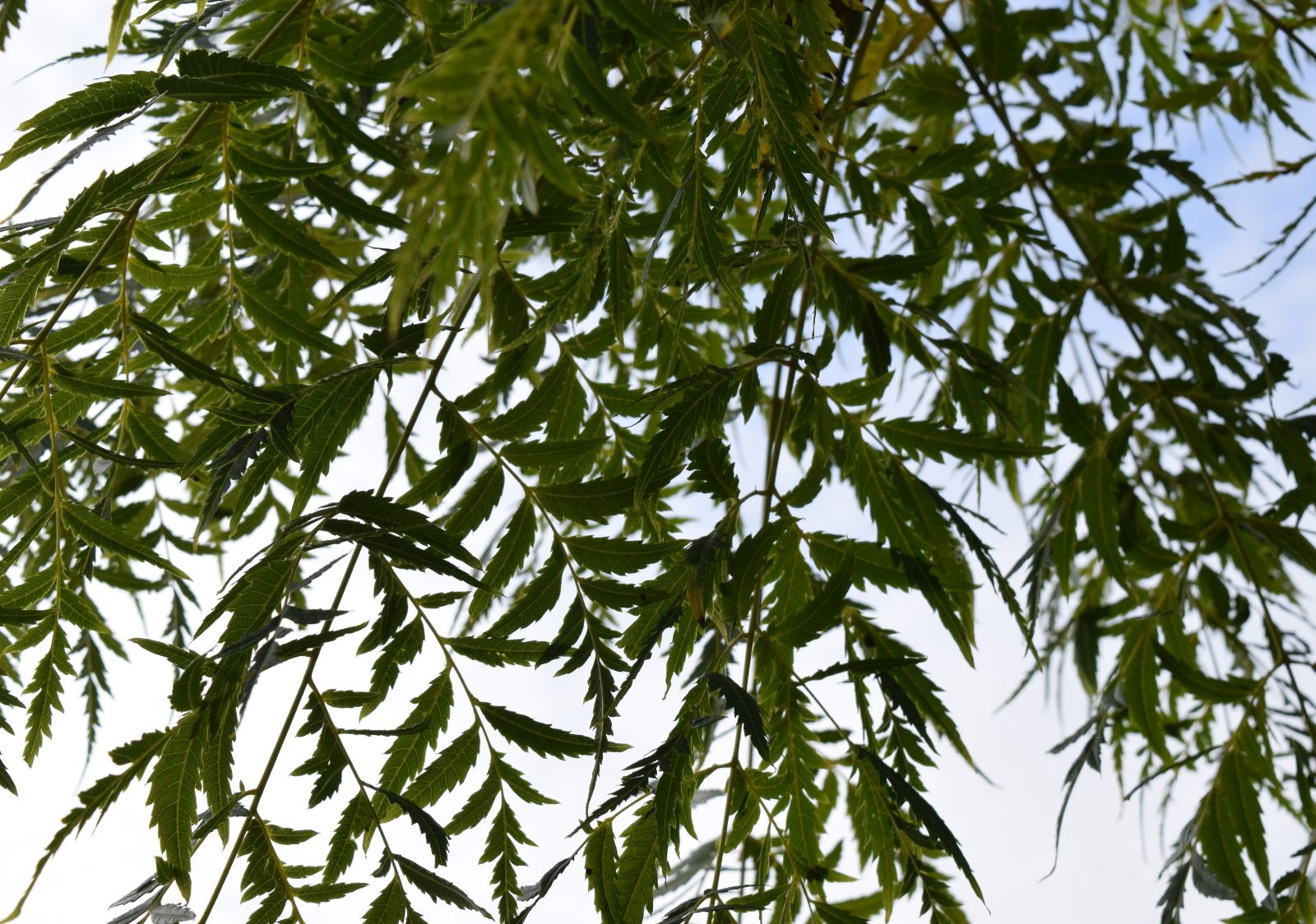Juglans nigra
Sponsor
Kindly sponsored by
a member of the International Dendrology Society
Credits
Julian Sutton (2019)
Recommended citation
Sutton, J. (2019), 'Juglans nigra' from the website Trees and Shrubs Online (treesandshrubsonline.
Genus
Common Names
- Black Walnut
- Eastern Black Walnut
Infraspecifics
Other taxa in genus
- Juglans ailantifolia
- Juglans × bixbyi
- Juglans californica
- Juglans cinerea
- Juglans cinerea × mandshurica
- Juglans hindsii
- Juglans hirsuta
- Juglans × intermedia
- Juglans major
- Juglans mandshurica
- Juglans mandshurica × regia
- Juglans Mexican Species
- Juglans microcarpa
- Juglans mollis
- Juglans × notha
- Juglans olanchana
- Juglans Paradox hybrids
- Juglans pyriformis
- Juglans × quadrangulata
- Juglans regia
- Juglans sigillata
- Juglans × sinensis
- Juglans steyermarkii
Large tree to 40(–50) m. Bark medium to dark grey or brownish, with deep, narrow ridges. Branchlets with upper margin of leaf scar notched, not bordered by band of pubescence; pith light brown. Terminal buds ovoid or subglobose, weakly flattened, 8–10 mm. Leaves 20–60 cm; petiole 6.5–14 cm. Leaflets (9–)15–19(–23), lanceolate or ovate-lanceolate, symmetric or weakly falcate, (3–)6–15 × 1.5–5.5 cm, margins serrate, apex acuminate; lower surface with hairs and scales scattered over veins and blade, axils of lower veins with tufts of hairs; upper surface glabrous except for scattered hairs on midrib; terminal leaflet small or often absent. Male catkins 5–10 cm; stamens 17–50 per flower. Fruits 1–2, subglobose to globose, rarely ellipsoid, 3.5–8 cm, warty, with scales and glandular hairs; nuts subglobose to globose, rarely ellipsoid, 3–4 cm, deeply grooved, surface between grooves coarsely warty. Flowering April–May (North America). (Whittemore & Stone 1997; Grimshaw 2004).
Distribution Canada S. Ontario United States Eastern and Midwestern states, from the Great Lakes south almost to the Gulf Coast, but absent from the extreme south east; scattered east to Kansas
Habitat Rich woods, especially in valley bottoms; 0–1000 m.
USDA Hardiness Zone 4-9
RHS Hardiness Rating H6
Awards AGM
Conservation status Least concern (LC)
Juglans nigra is the most widespread of the North American black walnuts, and was the first to be described. It is a magnificent forest tree, potentially taller than any other walnut. Well known on both sides of the Atlantic, it is economically a very significant species.
In its native range, the Black Walnut is an important timber tree, harvested both from managed natural forests (larger trees have been heavily exploited, Elias 1980) and from plantations. It is a shade-intolerant species, but benefits from the shelter of nurse trees when young. Many states have had their own genetic improvement programmes, quite apart from the selection of cultivars (see below), with seed production in orchards of elite trees; gradted, clonal trees are increasingly planted. Improved timber quality, yield and disease resistance are important aims (McKenna & Coggeshall 2018). The wood is used in furniture making, and makes fine firewood; the best figured timber is used for veneers and is prized for gunstocks (Coladonato 1991). This is such a valuable tree that theft of standing timber is frequent (Ross 1976, but an ongoing problem).
Nuts are of secondary importance, but are harvested commercially, adding value to the crop. Their flavour is stronger than that of J. regia, and they are traditionally used in cookies and ice cream. The flavour is impaired by storing them in their husks (pers. obs.). Ingrowths of the shell make it impossible to extract kernels whole, although mutants with a single-lobed kernel, collectively known as ‘peanut cultivars’ (for example ‘Throp’) allow this (Crawford 2016). Nuts are sold either in their shells or as broken kernels. Shells are hard and thick, posing a problem for domestic-scale cracking. Without heavy duty crackers it is easy enough to devise an efficient system using blocks of wood and a club hammer (pers. obs.): running over piles of nuts with a vehicle, while sometimes recommended, seems unnecessarily messy and brutal. The husks stain hands and clothing badly. Nuts are sometimes pressed for oil, nowadays marketed as a natural remedy as much as for food use. Powdered shells are used as an abrasive and as a component of winter vehicle tyres (Coladonato 1991).
The Black Walnut has been valued by indigenous peoples across its wild range as food, medicine (for diverse ailments, as an insect repellant and antihelminthic, at least the Cherokee understanding its toxicity), and for ritual uses (Moerman 2003). The husks and bark make yellow, brown, grey and black dyes with various mordants (Crawford 2016); more surprisingly the Cherokee used leaves to make a green dye (Moerman 2003).
This is the walnut in which allelopathy is best documented (Willis 2000). Anecdotal and experimental evidence agree that at least in the long term it is a significant issue. Confusing and contradictory lists of ‘resistant’ and ‘tolerant’ companion species are frequently seen, but Black Walnut is not universally detrimental and mixed cropping systems are possible (Scott & Sullivan 2007). The nitrogen fixing Eleagnus umbellata makes an effective nurse tree, at least in the short to medium term.
Juglans nigra was already well established in Europe by the time it was described, in Linnaeus’ Species Plantarum of 1753. The English gardener and plant collector John Tradescant the Younger (1606–1662) introduced it (probably from Virginia) before 1656 (Elwes & Henry 1906). It has sometimes been used as a forestry species in lowland Britain and elsewhere in Europe: this seems to be increasing and it is predicted that climate change will extend its viability in northern and upland Britain (Forest Research 2019). A block of woodland on the south-west facing slope of Settrington Wold, North Yorkshire, has been planted with J. nigra and this optimism by Sir Richard and Kenelm Storey seems to be well-founded, with excellent growth rates leading to shapely straight young trees that show great promise (J. Grimshaw, pers. comm. 2019).
As an ornamental, it is sometimes planted as a shade tree in North America, although especially in the west other large, vigorous walnuts such as Paradox hybrids are sometimes mistaken for this species. Where falling nuts are considered messy (an attitude almost inconceivable from a British perspective) cultivars such as ‘Purdue 2’ which produce few or none might be selected (Beineke 1990).
British specimens from the 17th century were dying by the early 20th century (E&H). A low, but immensely broad tree at Antony House, Cornwall, is believed to date from 1785, while another at The Old Rectory, Much Hadham, Hertfordshire (25 m × 221 cm, 2014) was planted in 1820 (The Tree Register 2019). Impressive specimens are not uncommon, especially in southern England, for example one in Battersea Park, London measured at 32 m × 120 cm in 2010 (The Tree Register 2019). Significant trees are recorded across Europe east to Poland and Romania, and from the Baltic to northern Italy, where a massive tree estimated at 40.5 m tall is recorded from the castle garden at Rocca Meli-Lupi, Soragna (monumentaltrees.com 2019). Material from its natural northern limit is proving ‘exceptionally winter hardy’ in southern Finland (Arboretum Mustila 2019).
Natural hybrids are suspected with both J. major and J. microcarpa where ranges overlap (Whittemore & Stone 1997). Hybrids with J. regia are described under J. × intermedia. The hybrid ‘Royal’ is J. nigra × J. hindsii. ‘Leslie Burt’ is a little-known hybrid with a Japanese J. mandshurica (Grimshaw 2004). More complex hybrids are possible; S.W. Snyder (in Northern Nut Growers Association 1930) described raising hybrids between J. nigra and J. × bixbyi.
Over 400 cultivars have been named, almost all in North America (Janick & Paull 2008). Overwhelmingly selected for timber and/or nut qualities, only a handful of well-known or ornamental varieites are listed here. Crawford (2016) neatly summarises cultivar qualities for the small-scale nut grower, and should be consulted for pollination groups. Leaf emergence time is a significant characteristic, given the species’ huge north-south range. Older cultivars seem to have been propagated both by seed and grafting, so should not always be regarded as clonal. There has been a modern trend towards patenting elite clonal cultivars, predominantly for timber qualities. Walter Beineke, working initially at Purdue University, Indiana, has been pre-eminent in this (Beineke 1990; ArborAmerica 2013).
'Alburyensis'
An ornamental variant sometimes mentioned in the literature, not for its wide cultivation but for a couple of well-known British specimens. Fruits are borne in clusters, as many as six together ‘like J. cinerea’ (Bean 1981); its branches are somewhat pendulous. The original tree grows at Albury House, Guildford, Surrey (20 m × 130 cm, 2008), while there is a much younger one at Kew, planted in 1960 (9 m × 27 cm, 2001 – The Tree Register 2019).
Beineke cultivars
These form a series of elite clones selected in Indiana by Walter Beineke in the late 20th and early 21st centuries, protected by US Patents, and named sequentially ‘Beineke 1’ to ‘Beineke 14’. All are selected for tree form and timber qualities; some are also reliable producers of high quality nuts, at least in the species’ natural range (ArborAmerica 2013; McKenna & Coggeshall 2018; Justia Patents 2019). Their primary use is in forestry, where clonal forests are economically viable given the high value of Black Walnut timber, but they will inevitably find their way into the landscape, in plantings where the higher initial cost of grafted stock is less significant. Various Beineke cultivars are currently (2019) available commercially in Europe as well as North America. Older patented clones selected by Beineke while working at Purdue University, Indiana, are listed by Beineke (1990).
'Deming Purple'
Rarely seen but ornamental, the foliage has a purplish tint, sometimes bordering on red, and purple husks; leaf form is normal (Janick & Paull 2008). It is named for W.C. Deming, founder of the Northern Nut Growers’ Association, and is not considered one of the hardiest in North America (Weschcke 1953). It goes back at least to the early 20th century. We have not been able to trace material under this name in Europe. However, ‘Purpurea’ (apparently not recorded in America) has occasionally been offered for sale in the United Kingdom and may be similar or identical.
'Emma K'
A nut variety, selected in Illinois for thin-shelled (hence easily cracked), well-filled nuts; a heavy, regular cropper (Crawford 2016) much recommended in the northern United States and Ontario, available on both sides of the Atlantic.
'Laciniata'
A beautiful cut-leaved variety, the leaflets divided to the base giving a ‘ferny’ look. Having many more leaflets than J. regia ‘Laciniata’, cut deeply and evenly as well as remaining attractive late in the season when the latter can look very tatty, it is the prettiest cut leaved walnut, a strong grower able to make a large tree. Its history is well documented by Jacobson 1996: Mr. J. Hershey, nurseryman of Downington, Pennsylvania, obtained one of a group of cut-leaved Black Walnuts found at Milton State Nursery, Milton, Pennsylvania in 1927. Hershey was selling it by 1937; the Arnold Arboretum distributed further grafts to nurseries in 1954. It is reputedly difficult to propagate, but is still sometimes available commercially in both Europe and North America. The Arnold has several good specimens, the largest of which was measured at 44 cm (dbh) in 2017 (Arnold Arboretum 2019). Much smaller specimens are recorded in the United Kingdom, notably several at Common Farm, Semer, Suffolk (the tallest 9 m in 2016) and one at Bluebell Arboretum, Derbyshire (5 m × 8 cm in 2017 – The Tree Register 2019).
'Thomas'
A celebrated old Pennsylvania nut variety, much sold and recommended in North America, but also available in Europe. It is a very late emerging, late flowering variety and hence suitable for cold areas. It is self-fertile, an important quality when planting an isolated tree (Crawford 2016).

